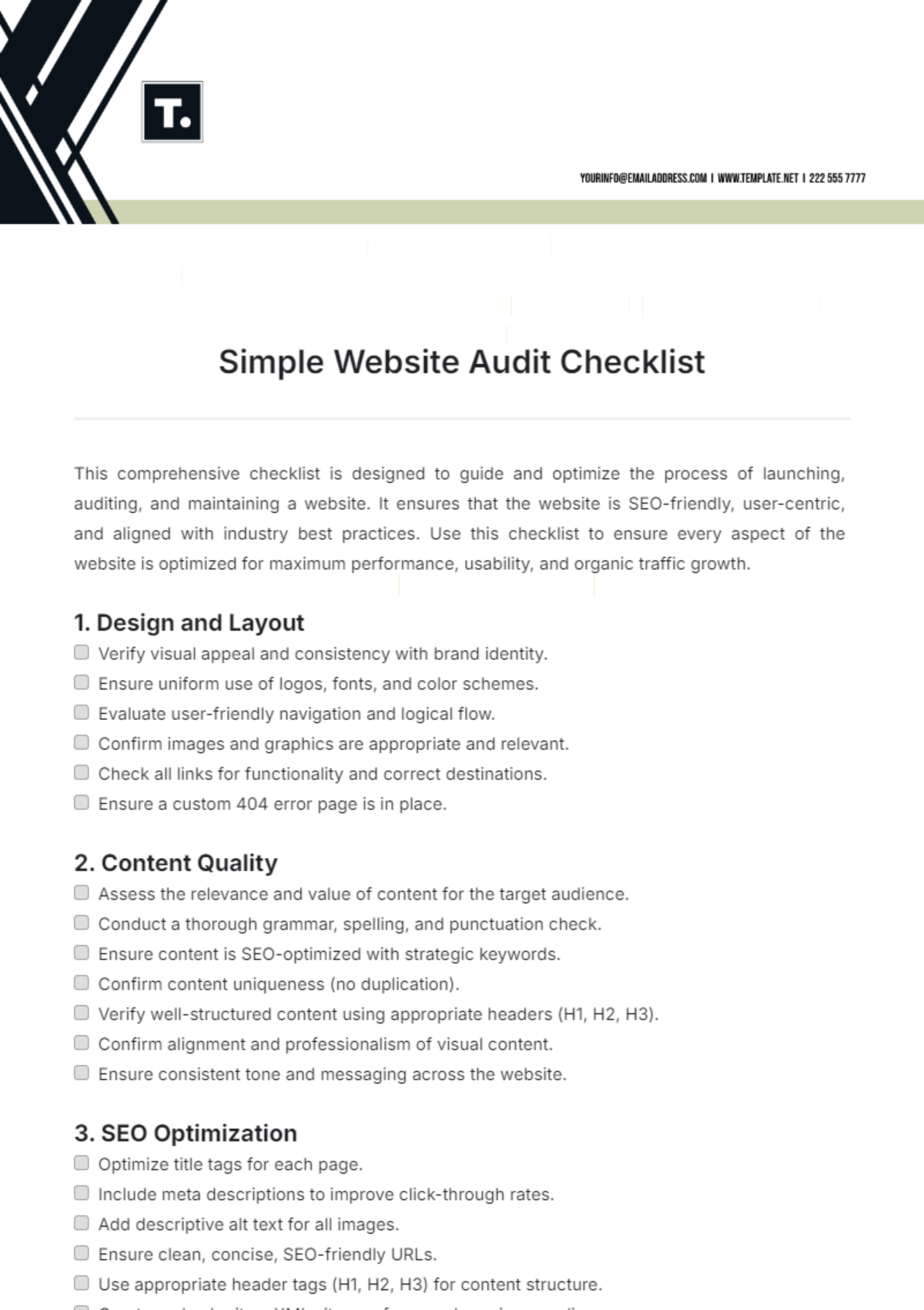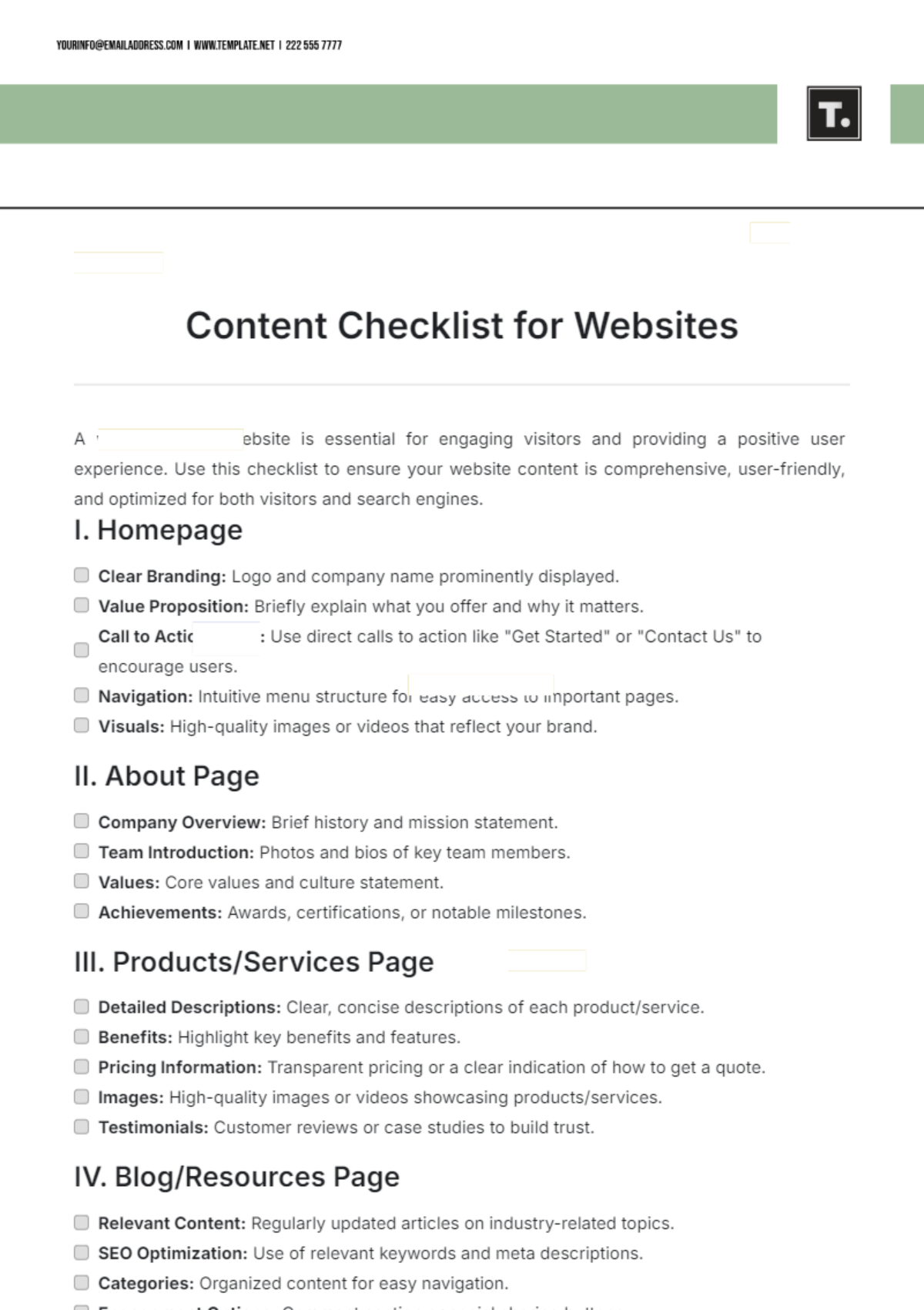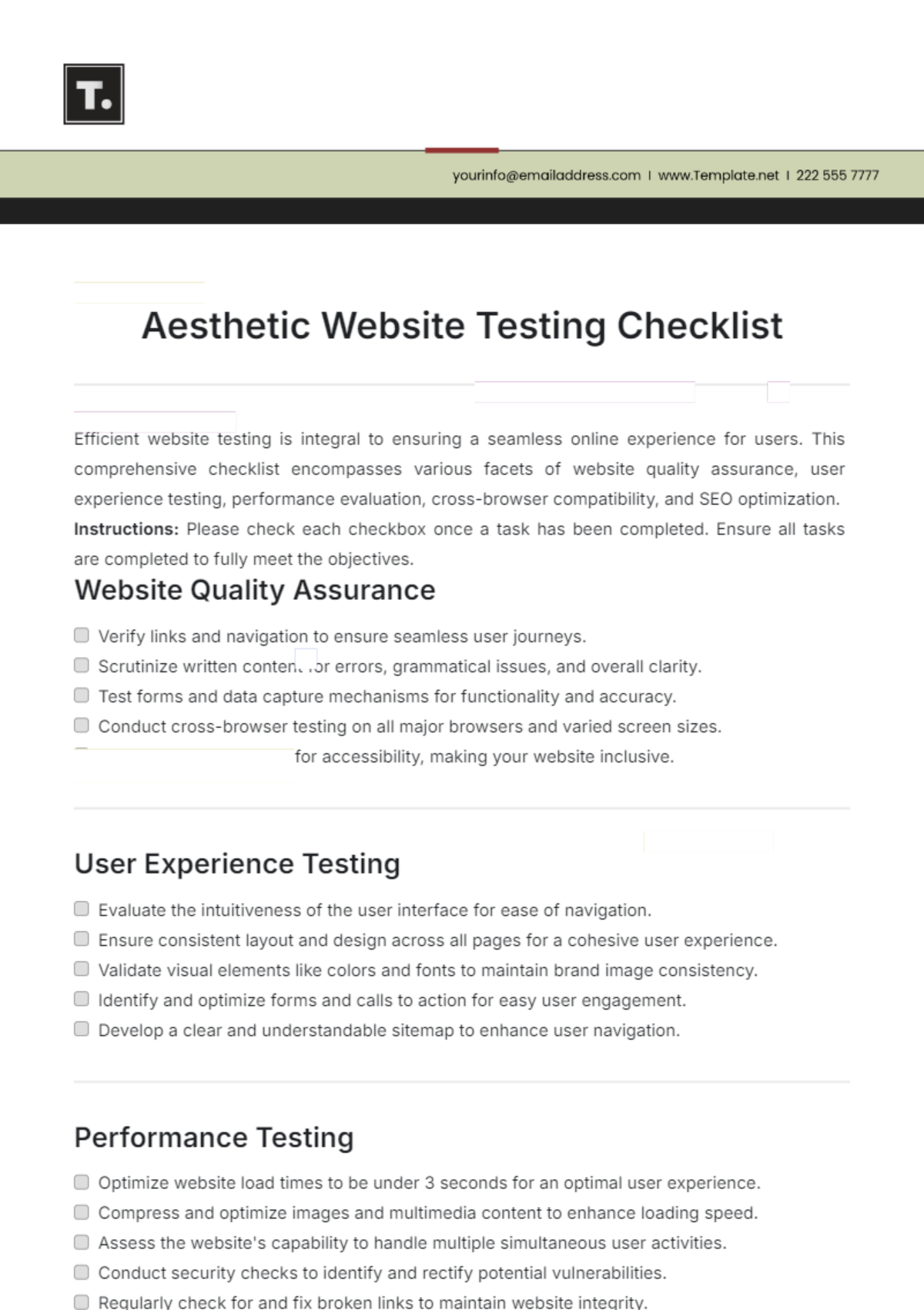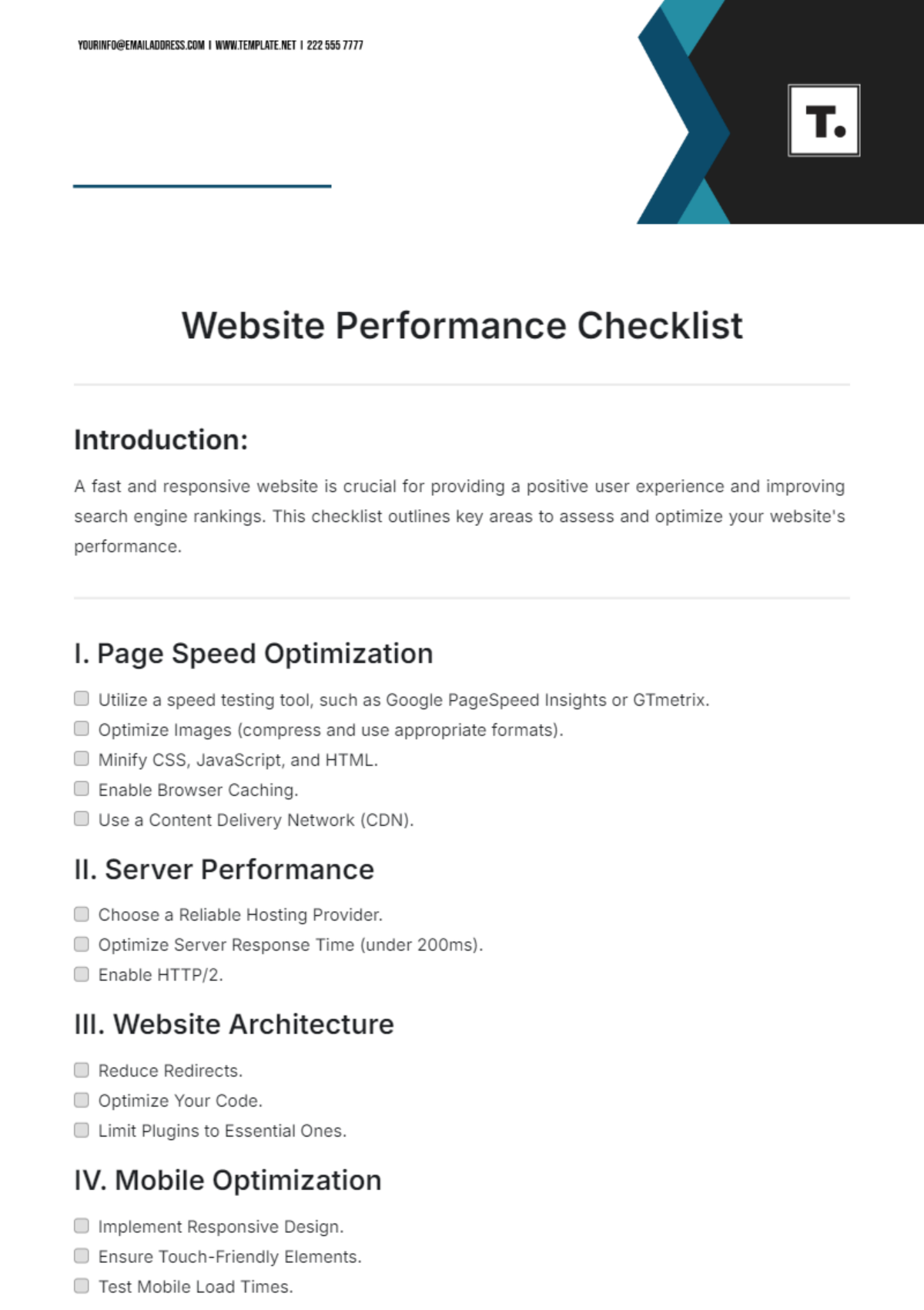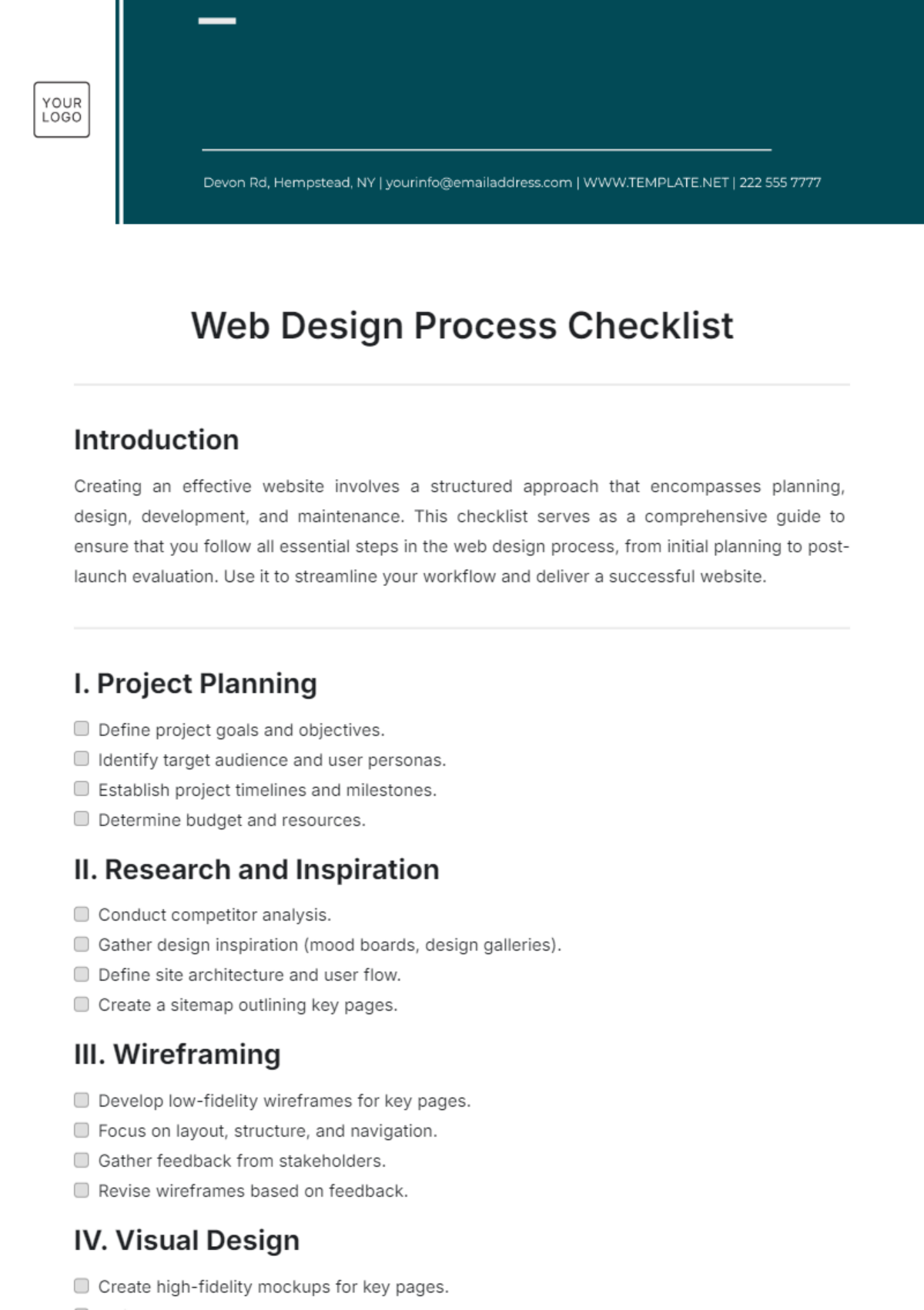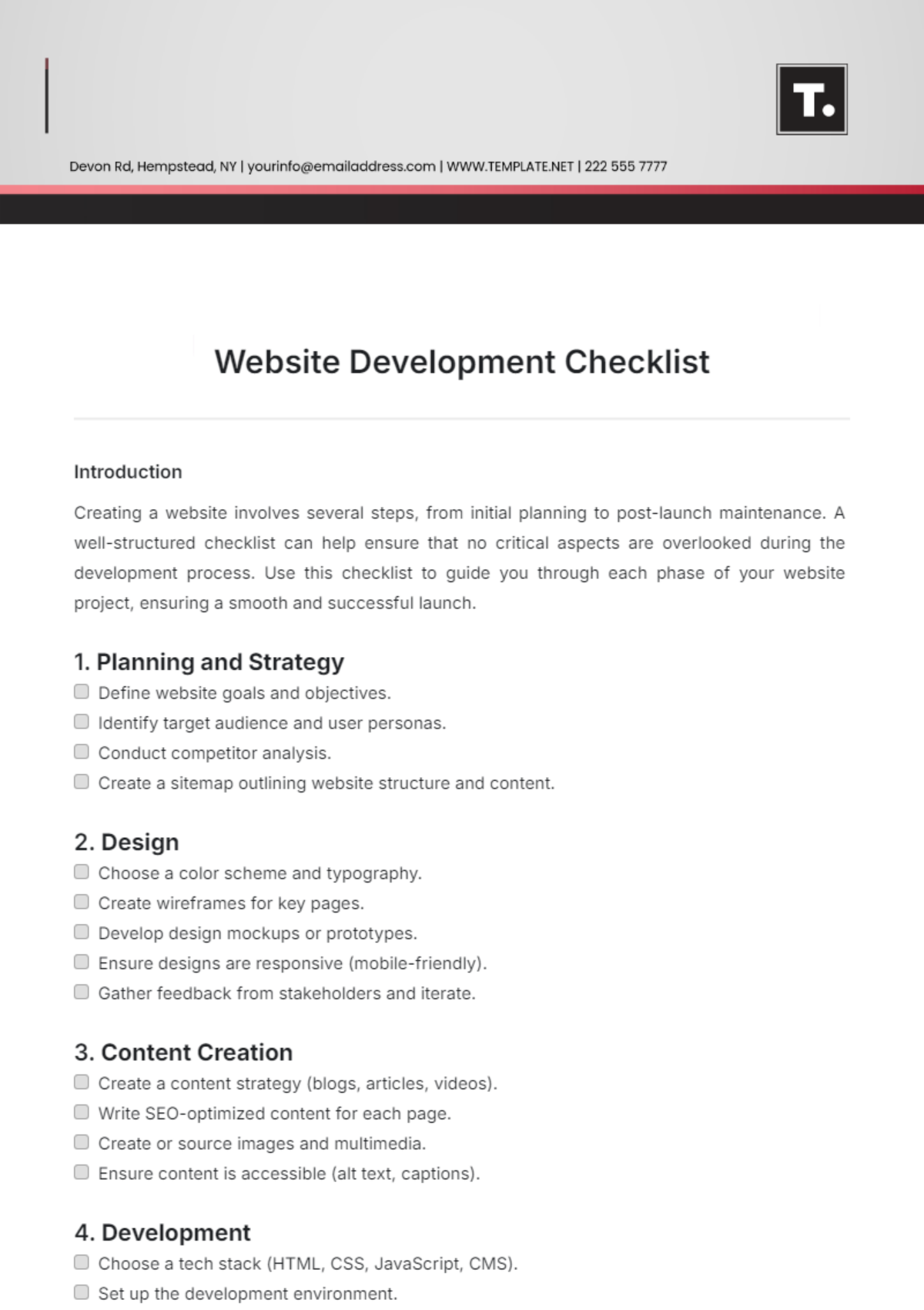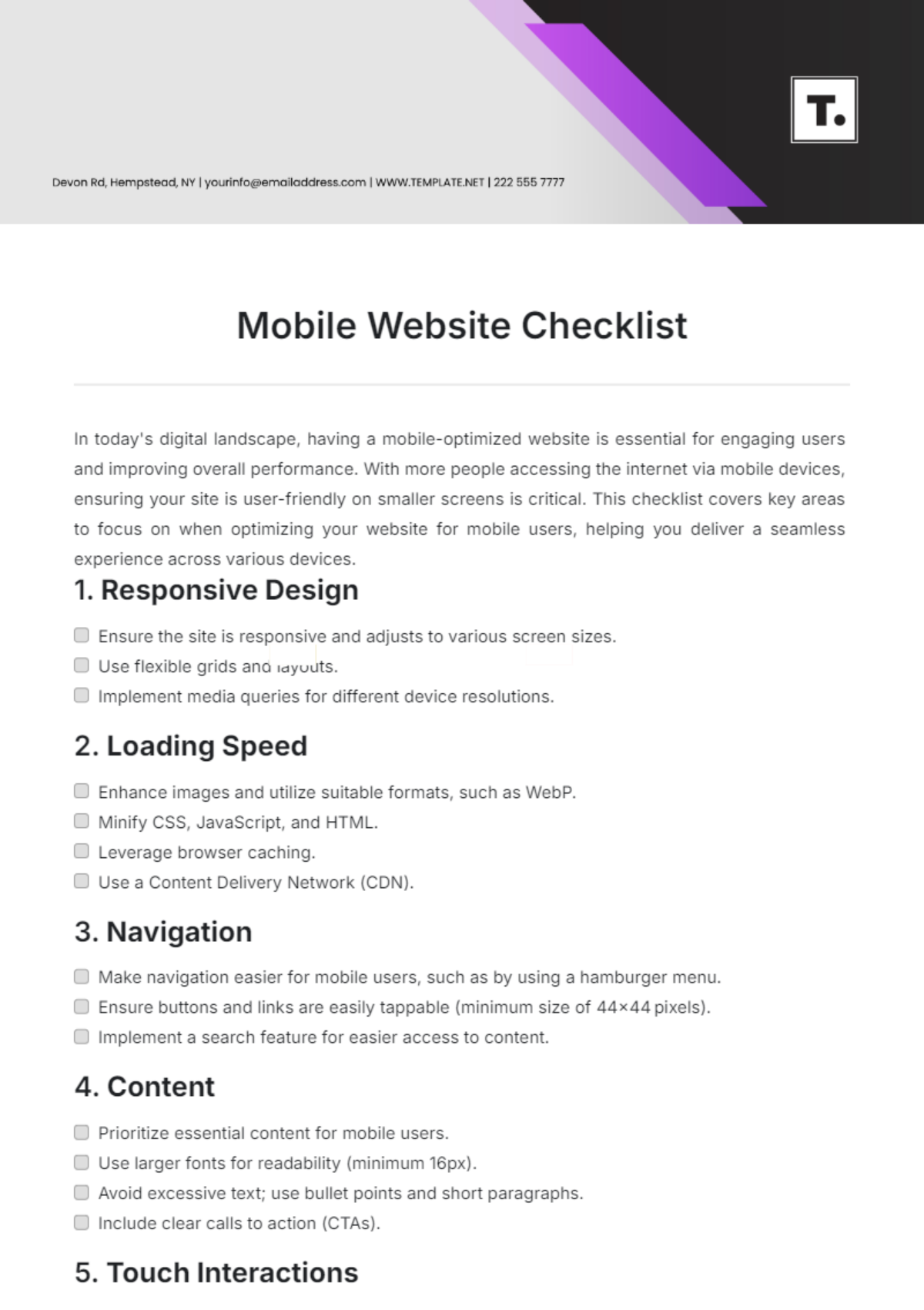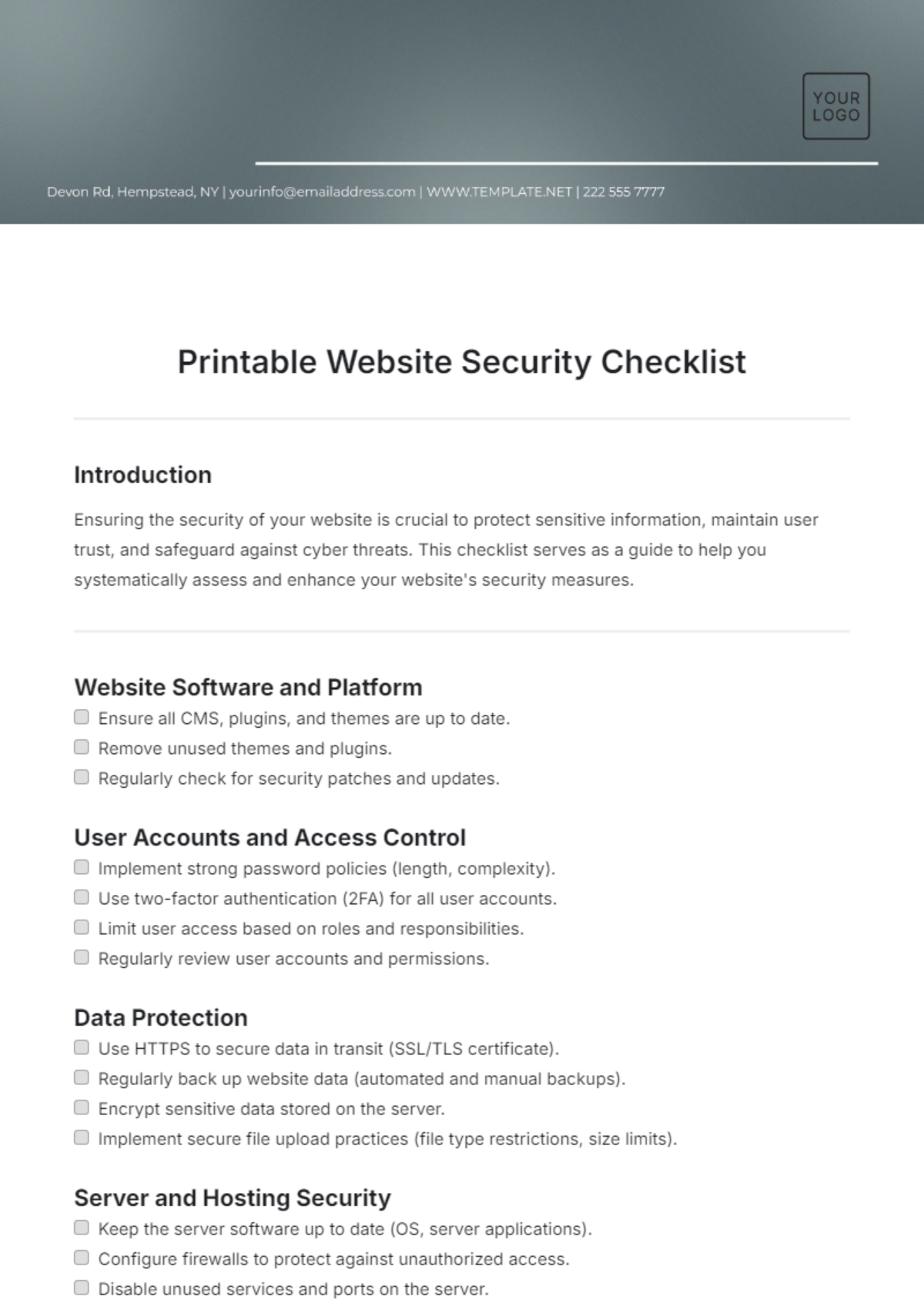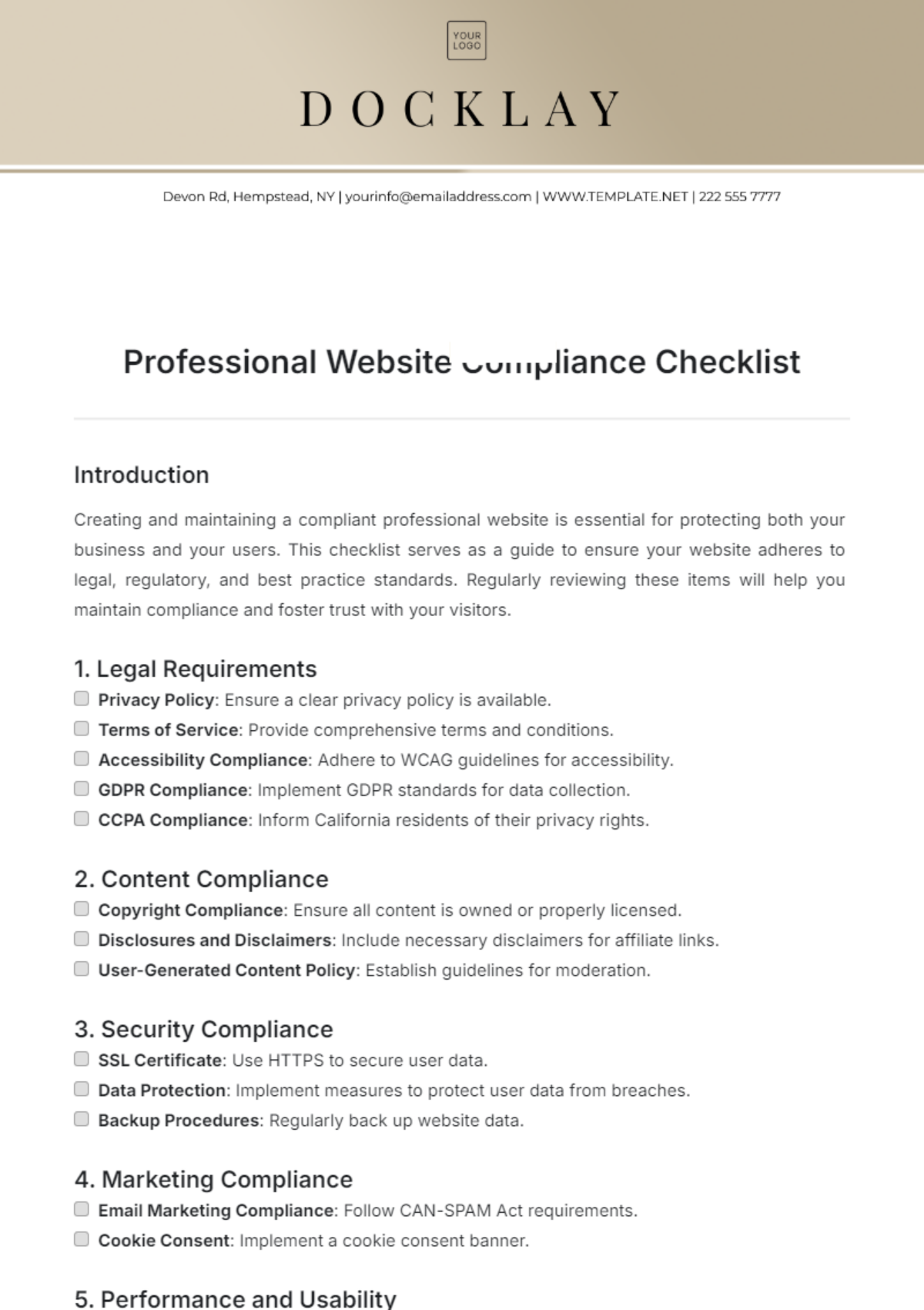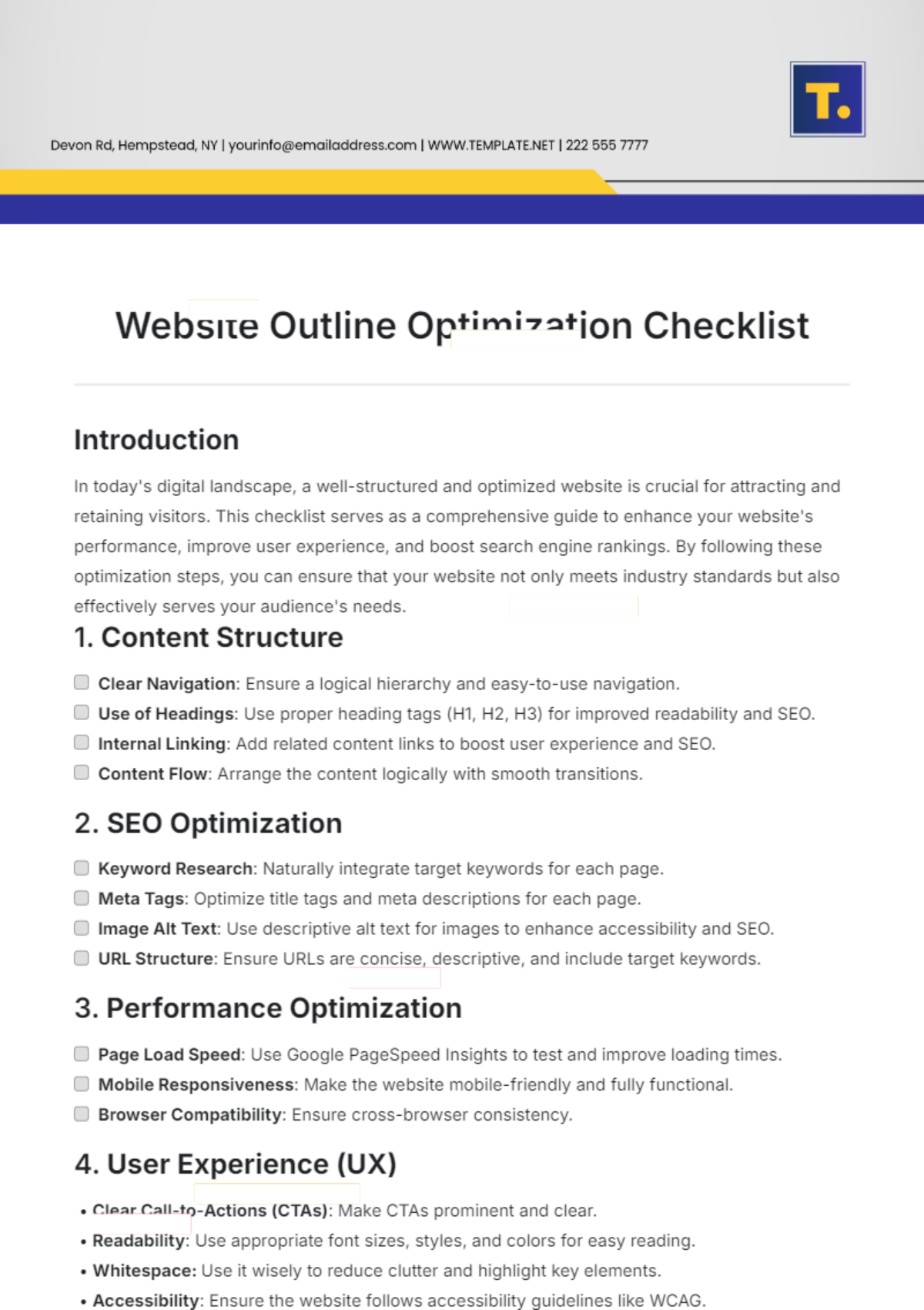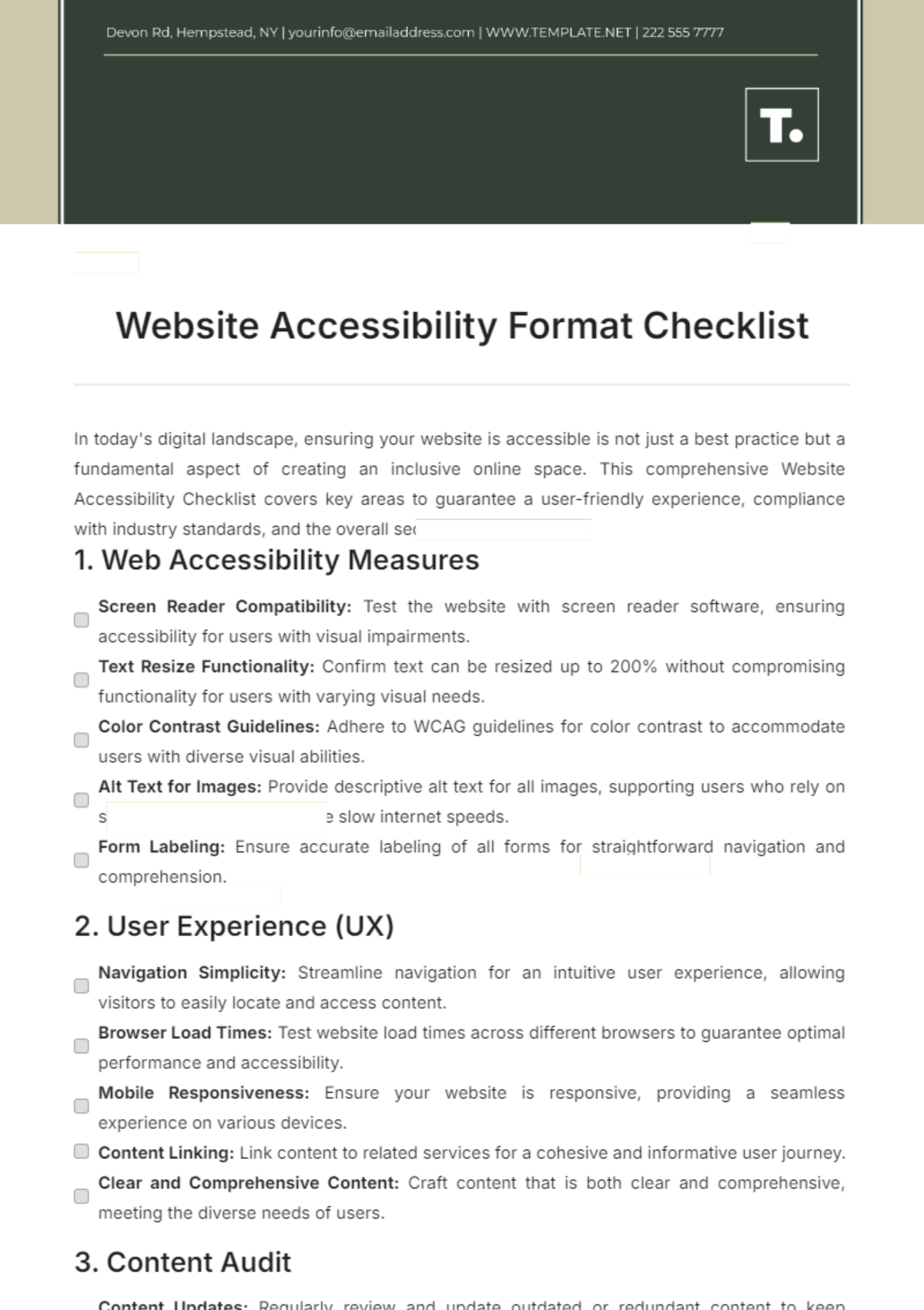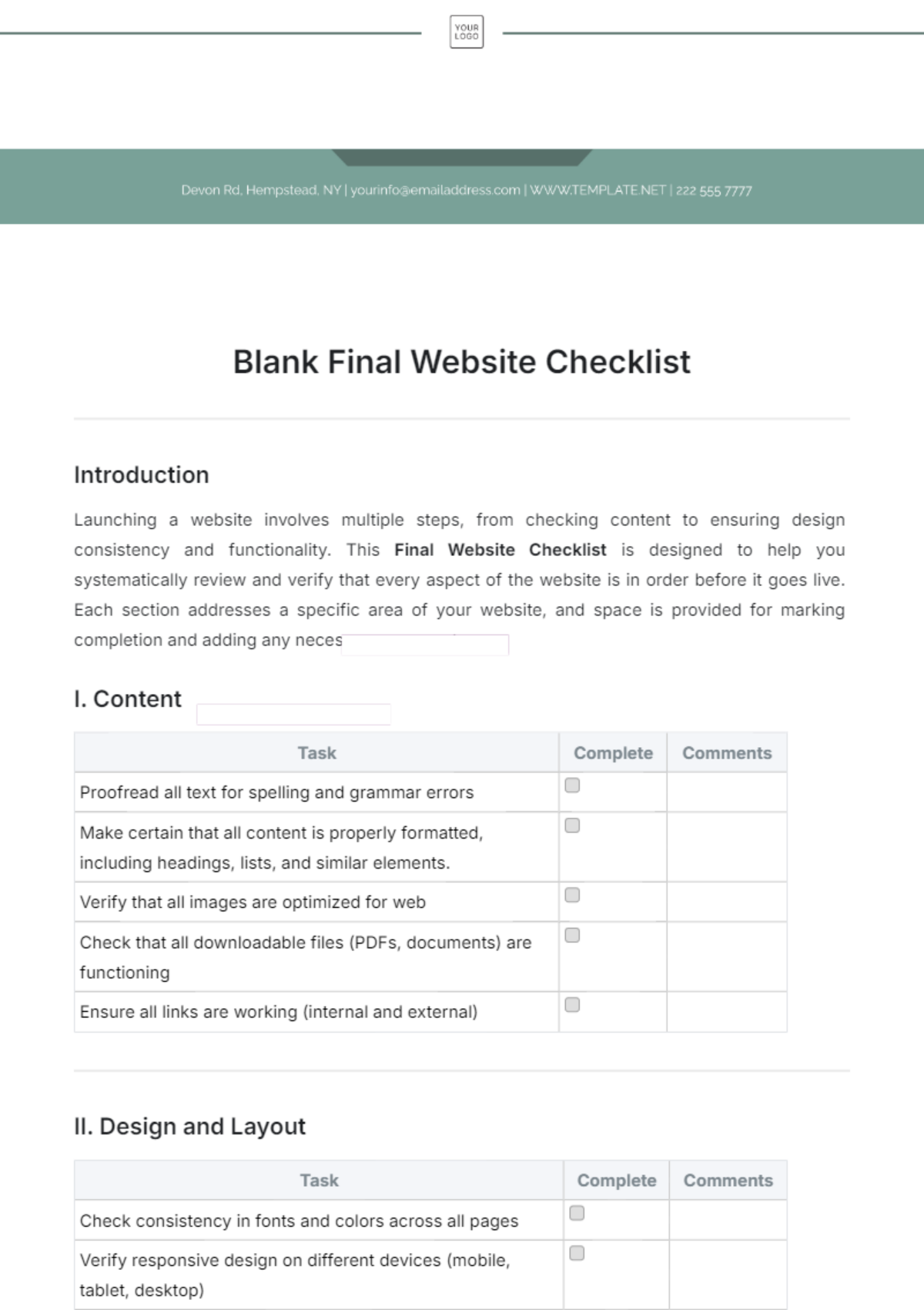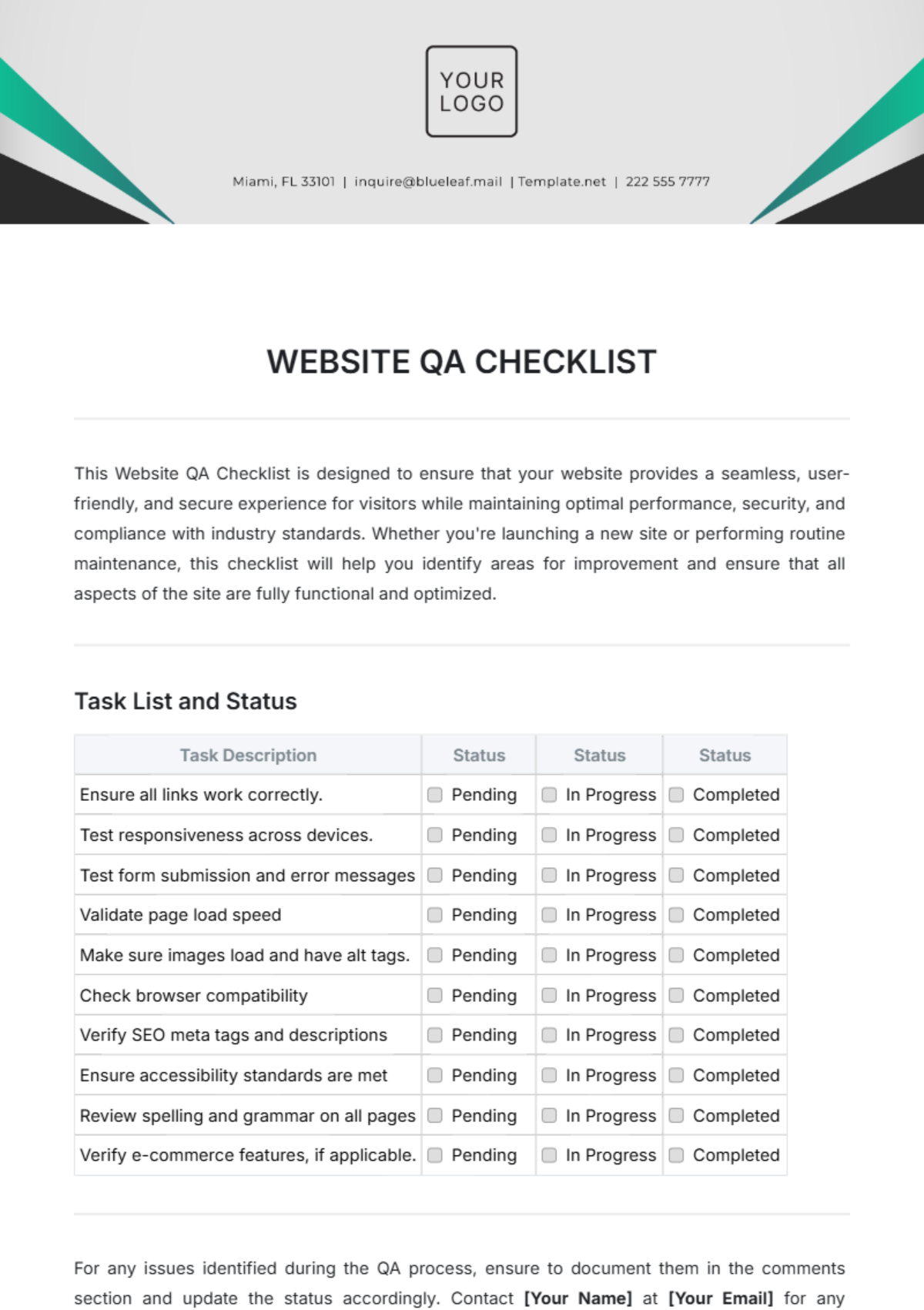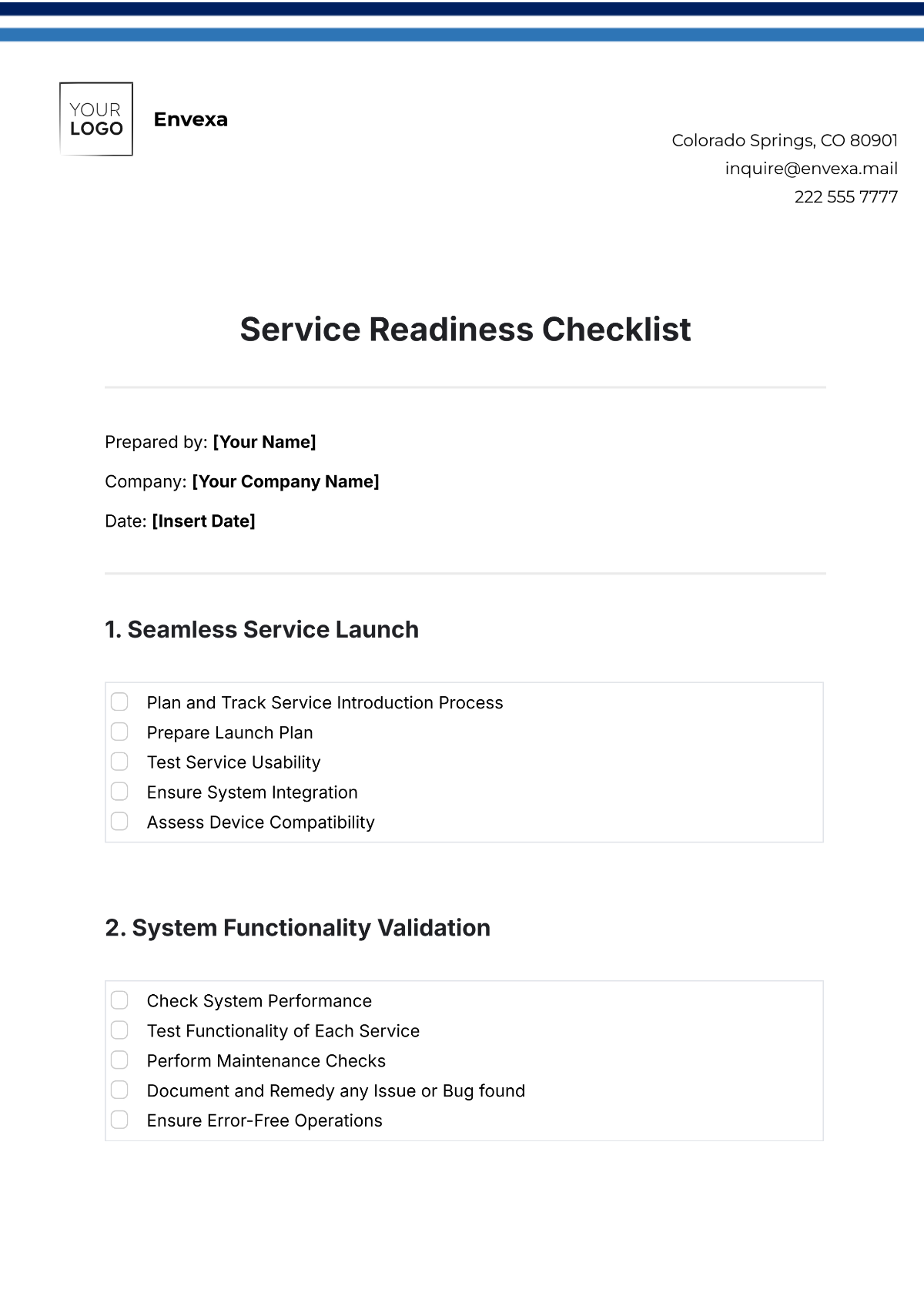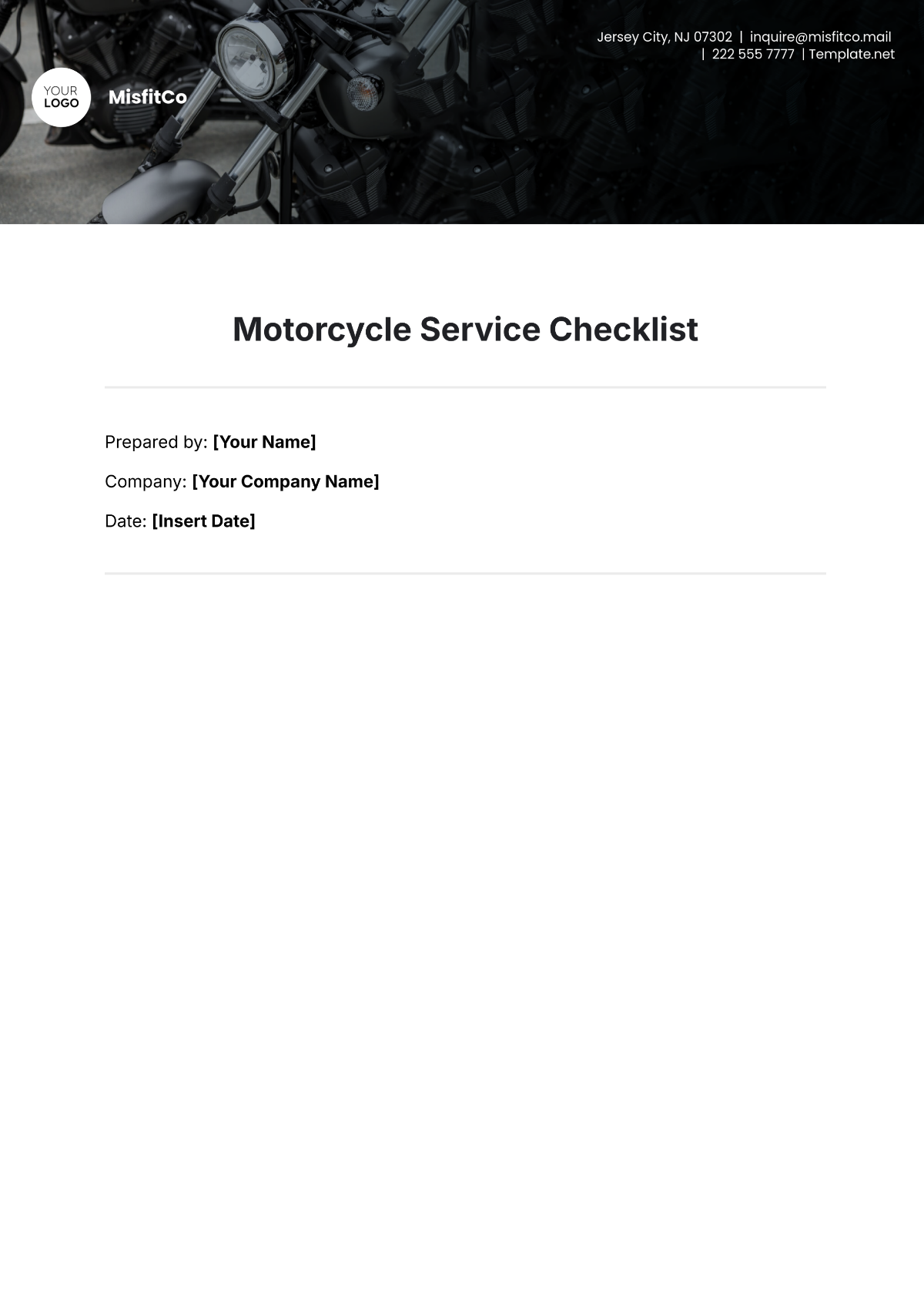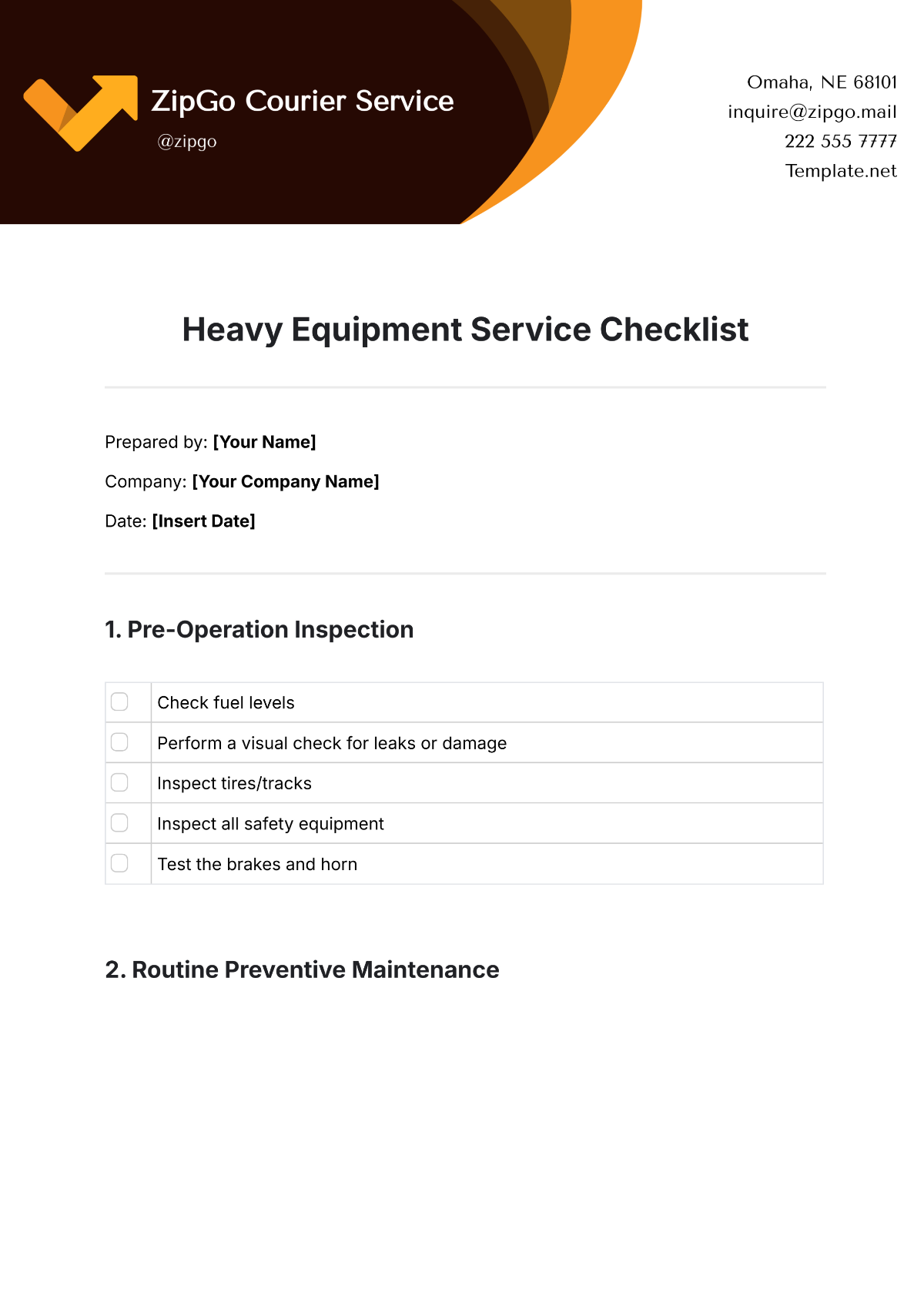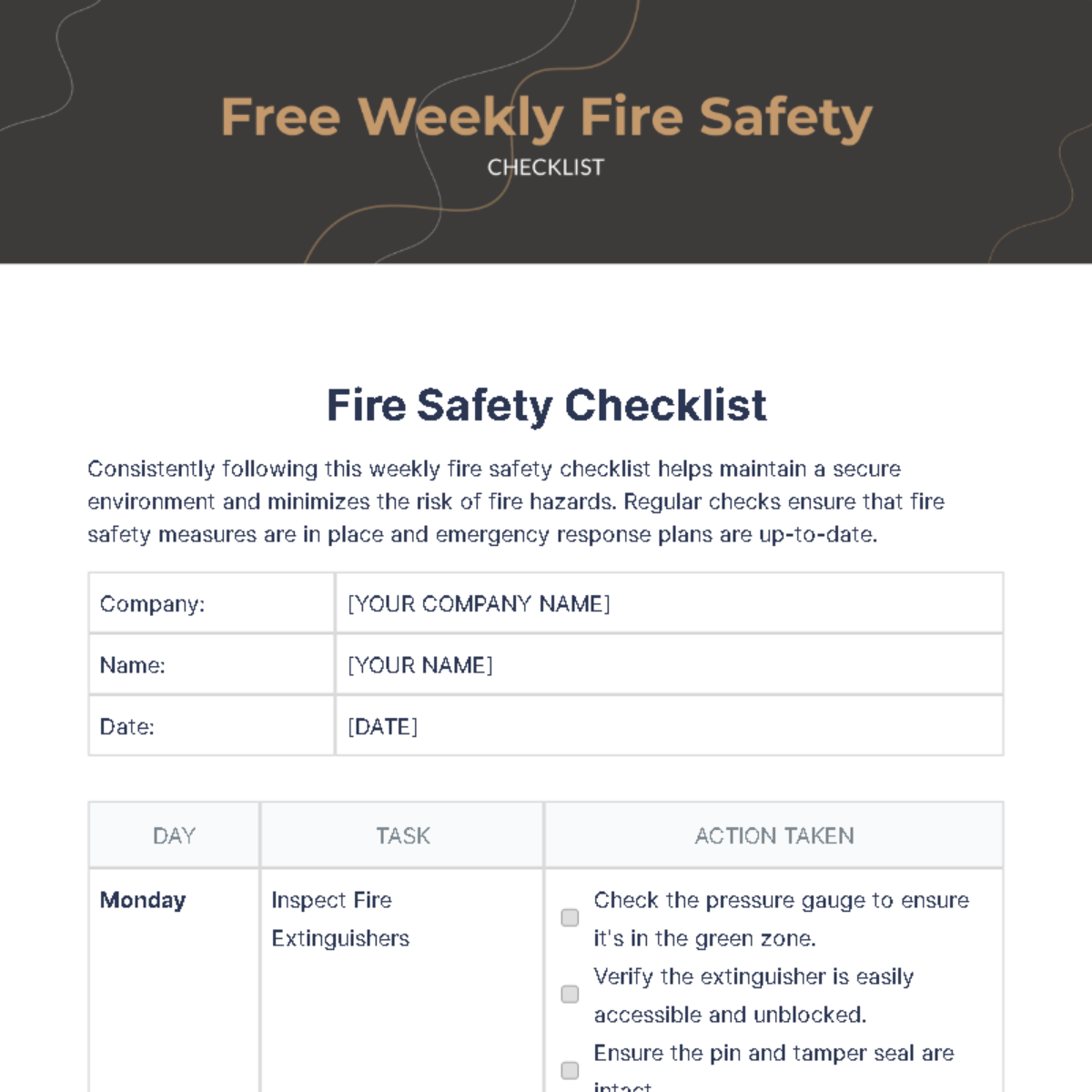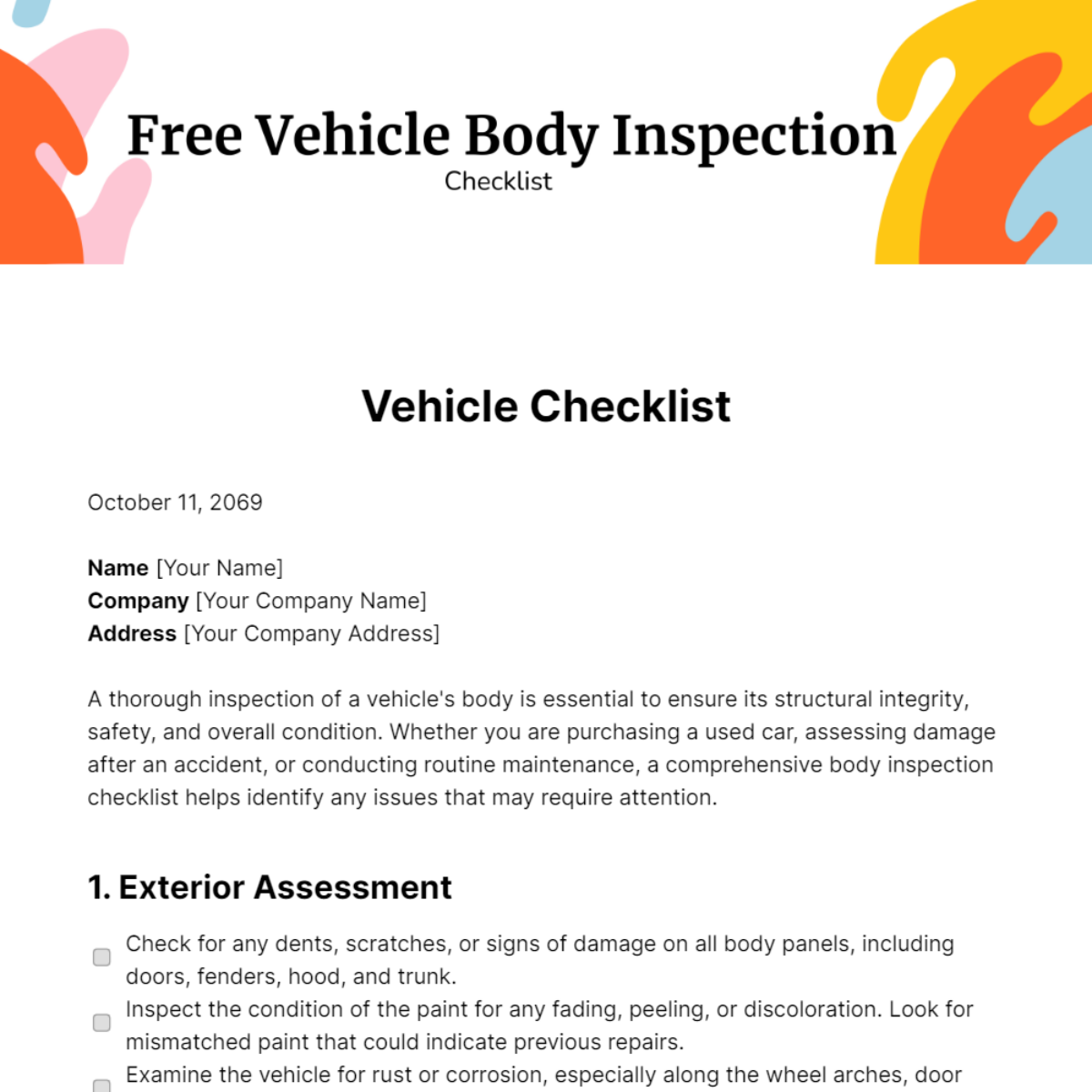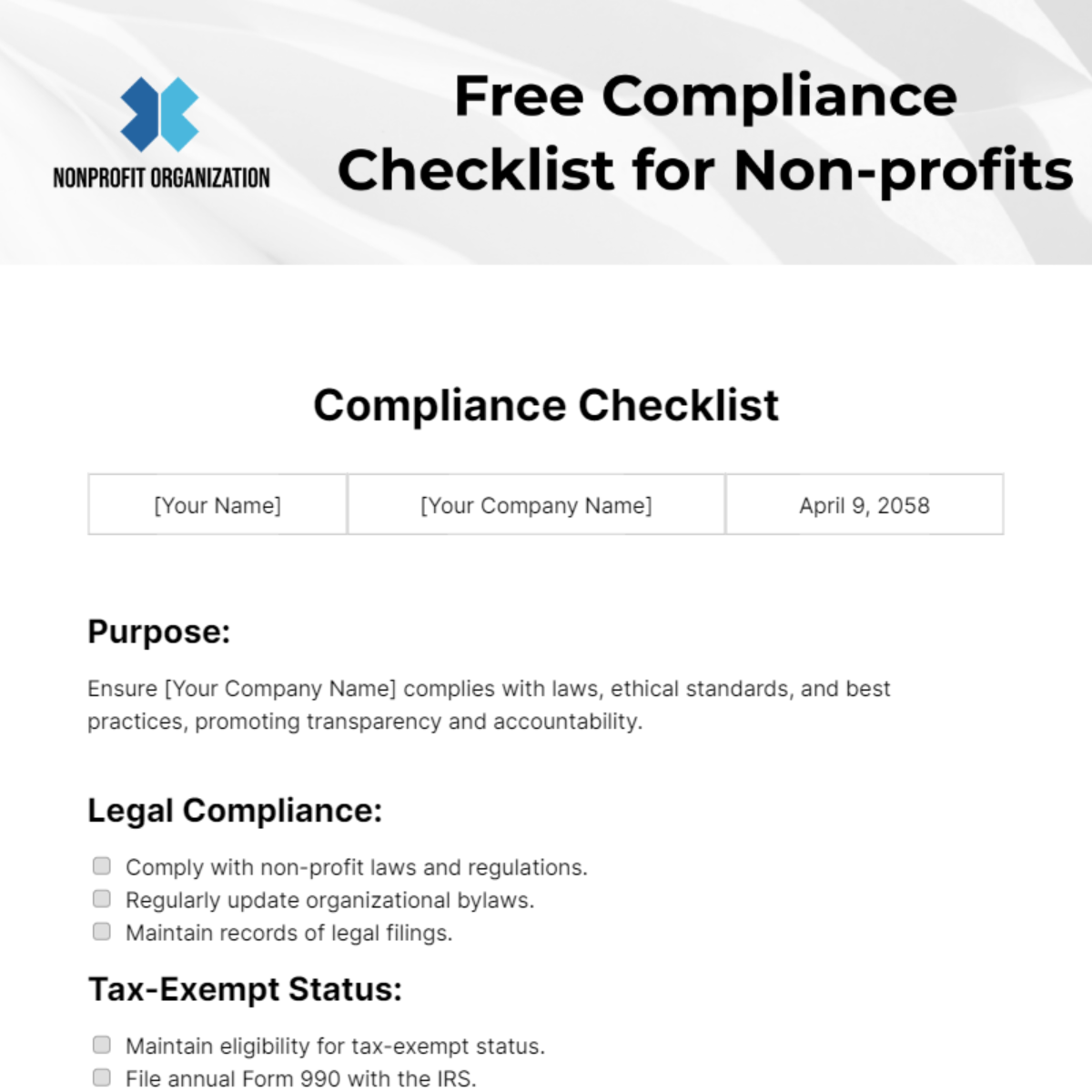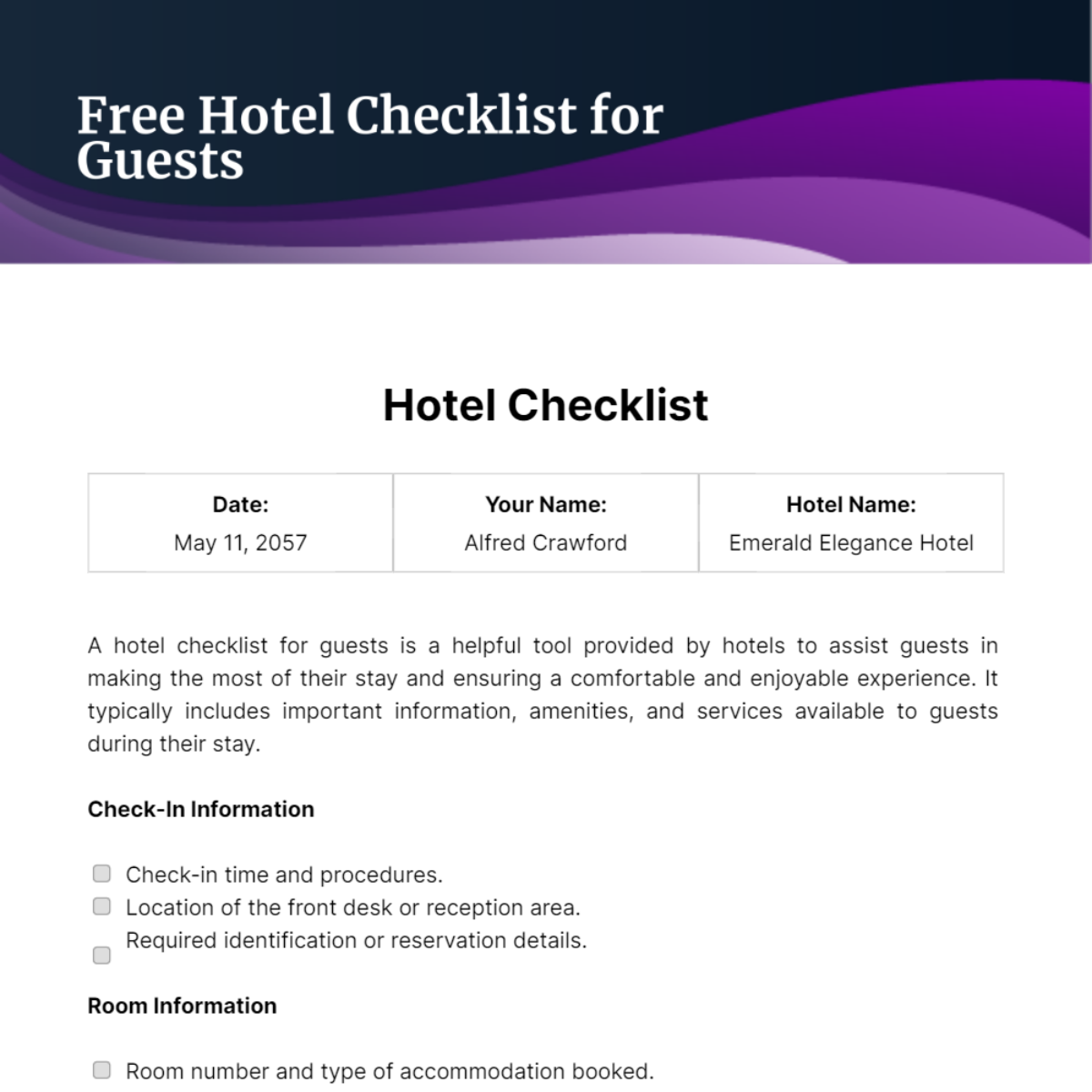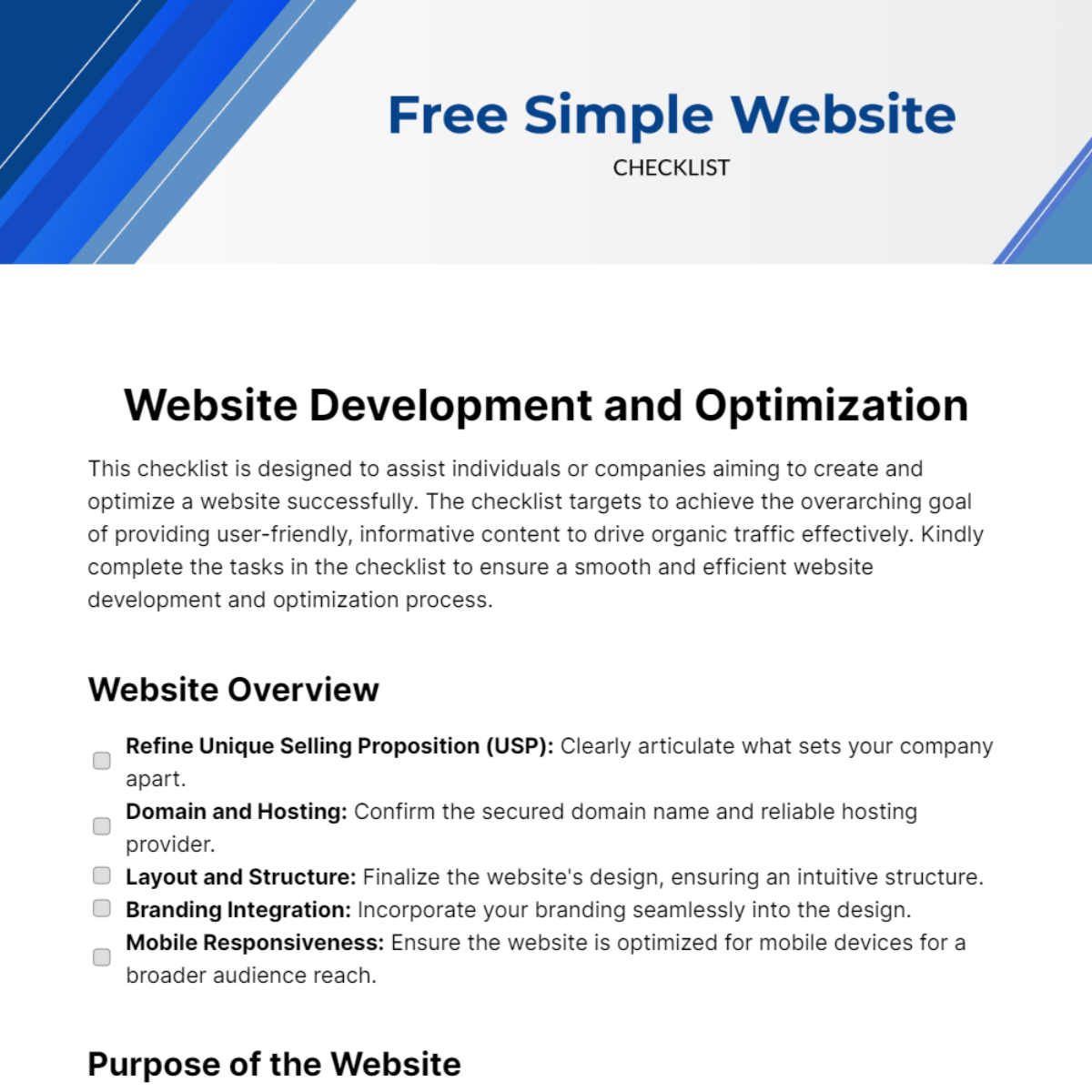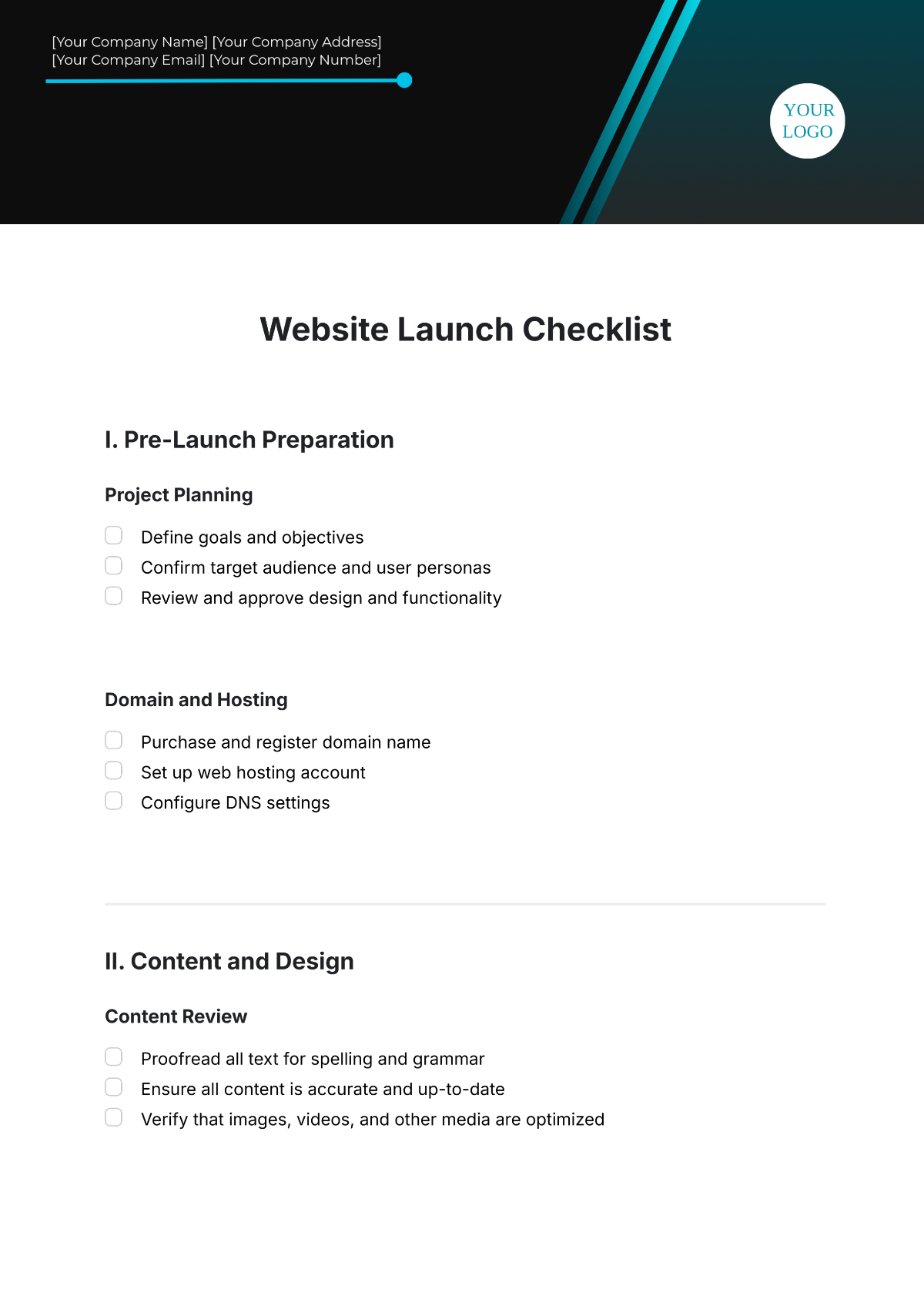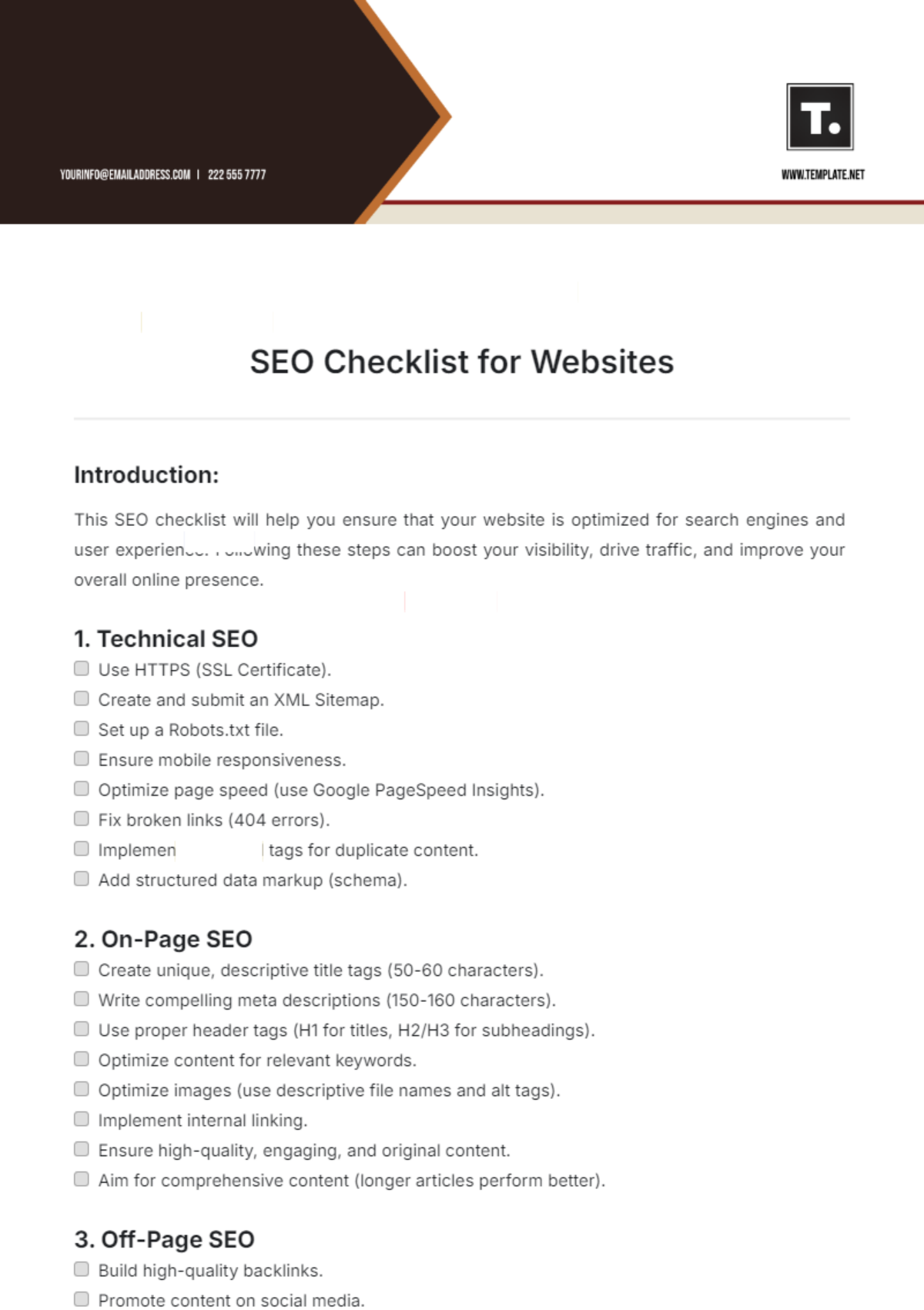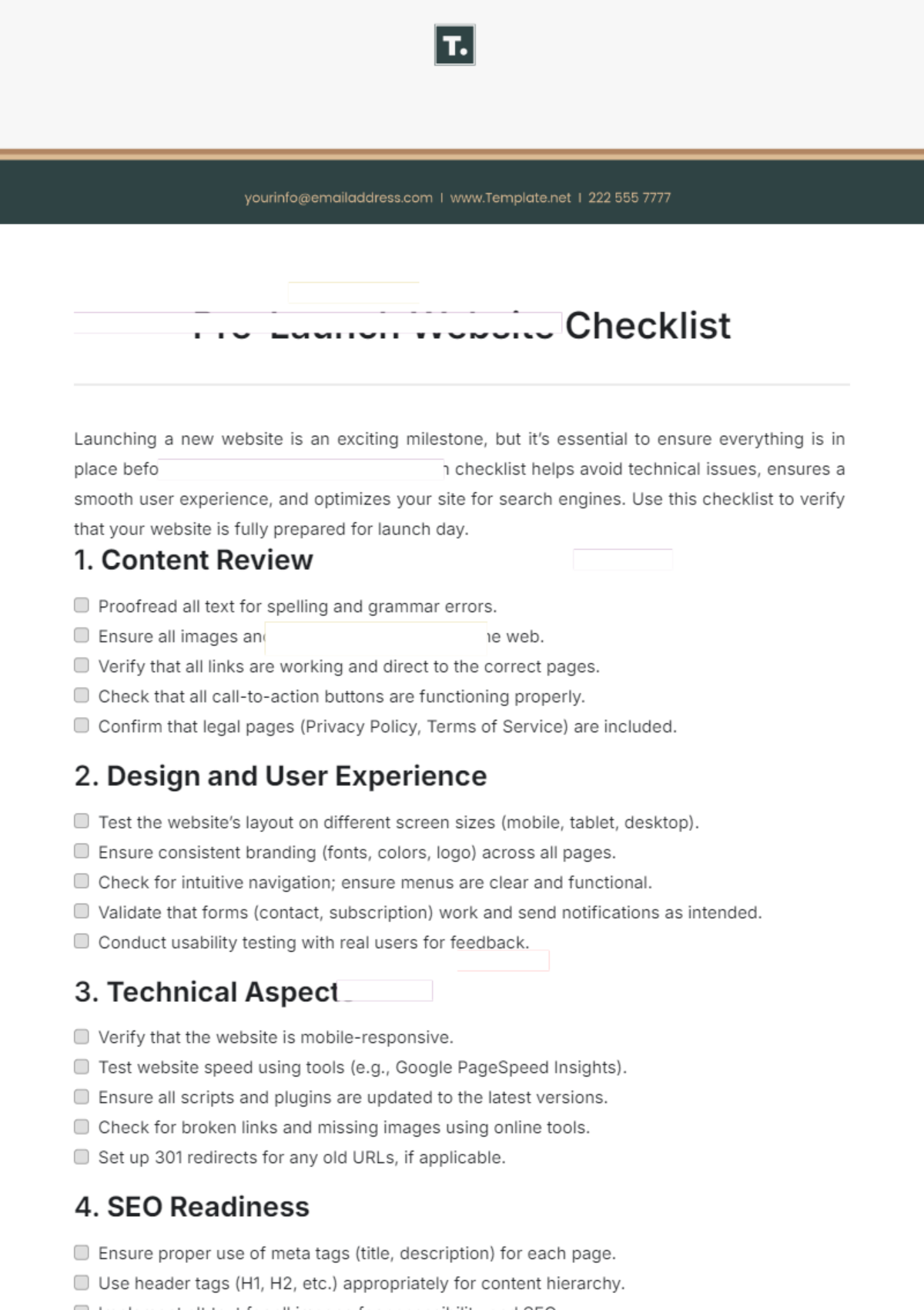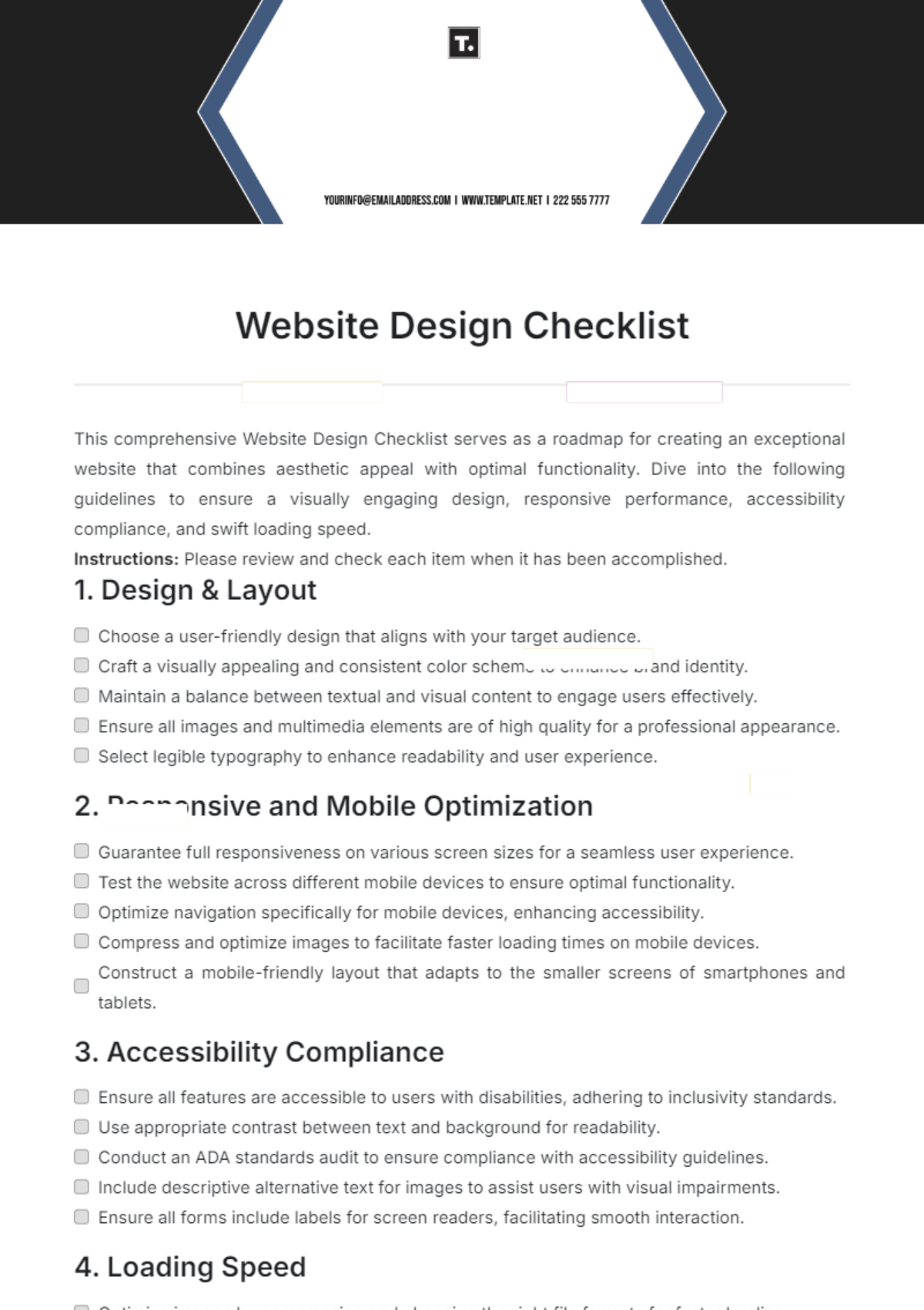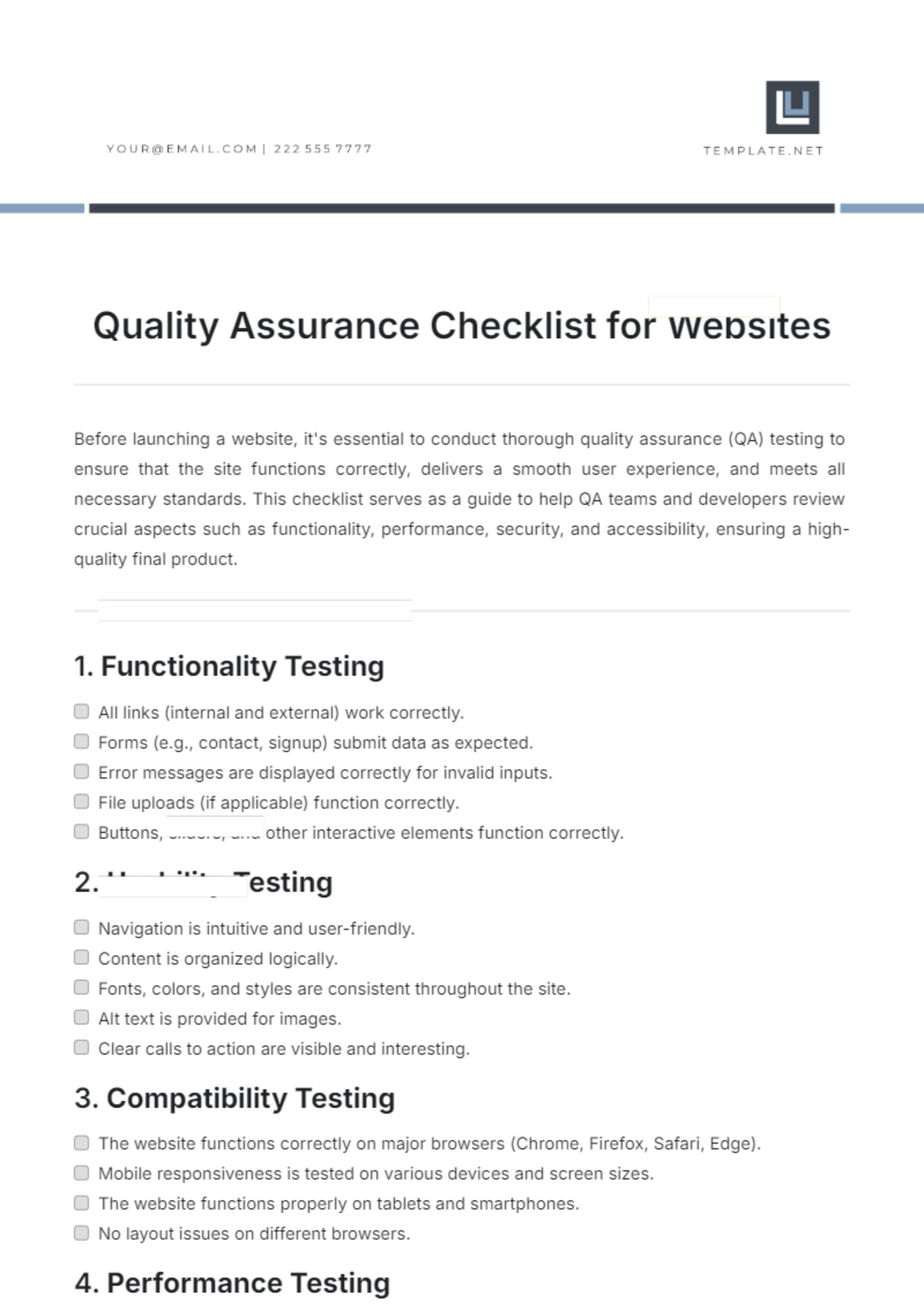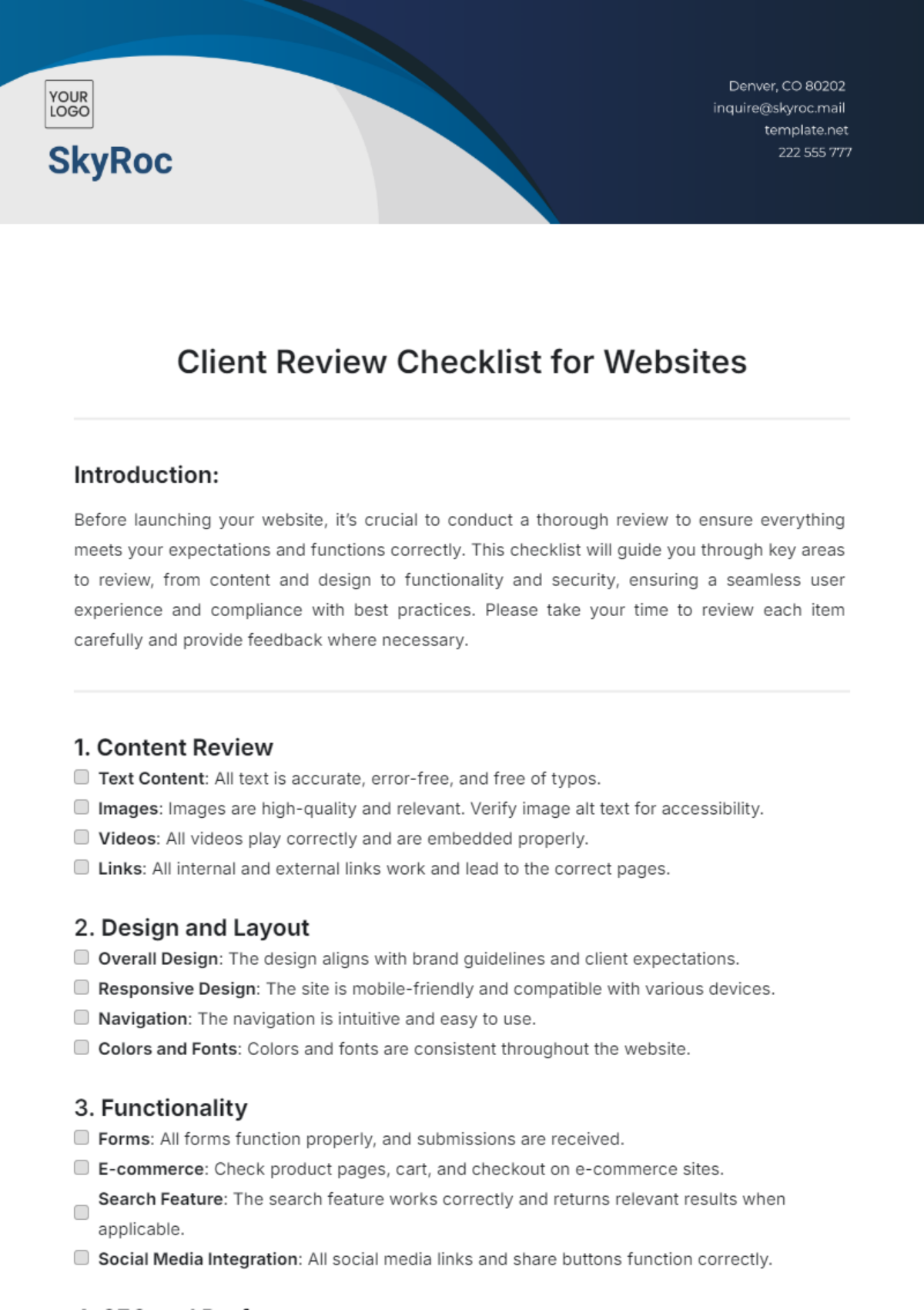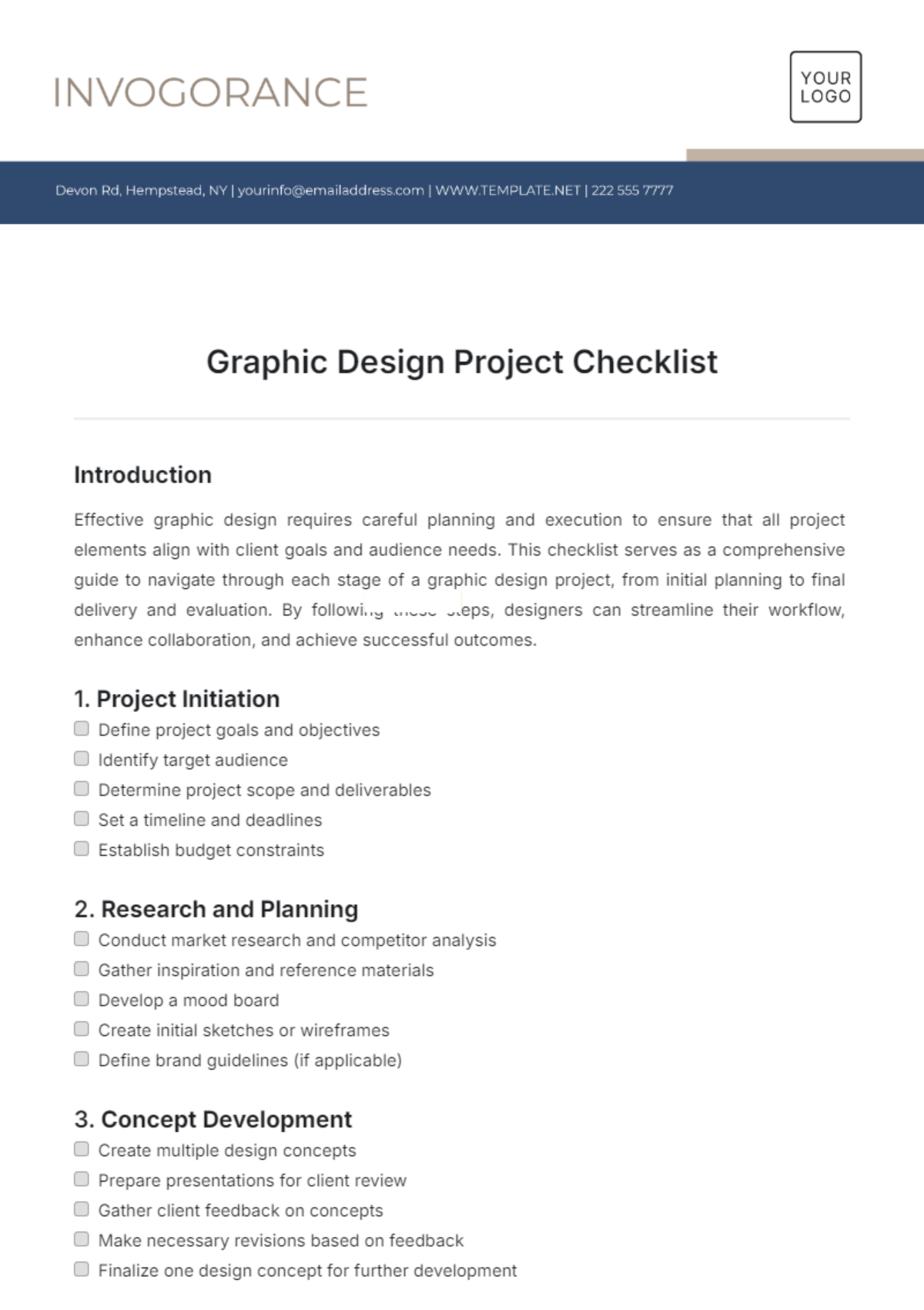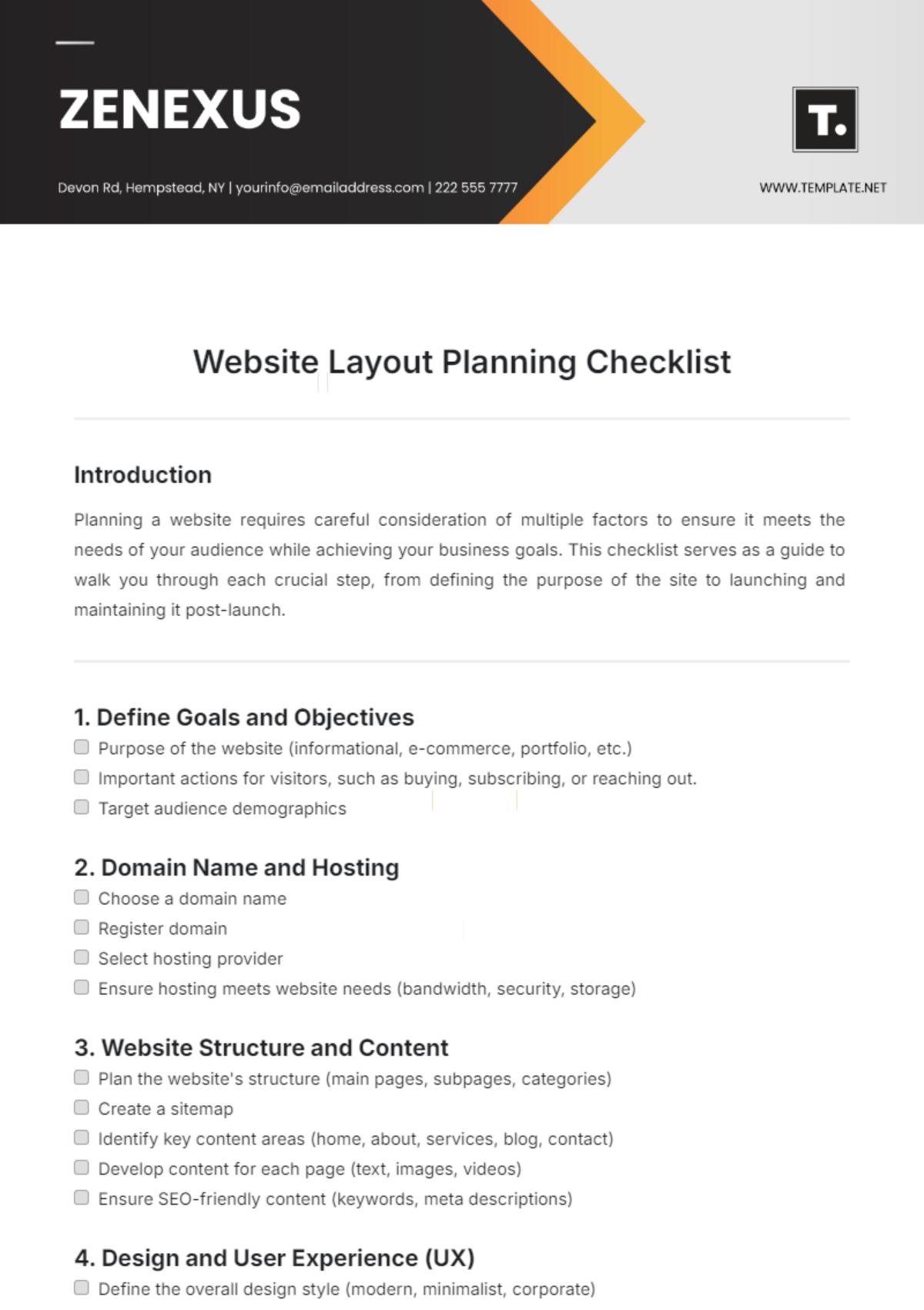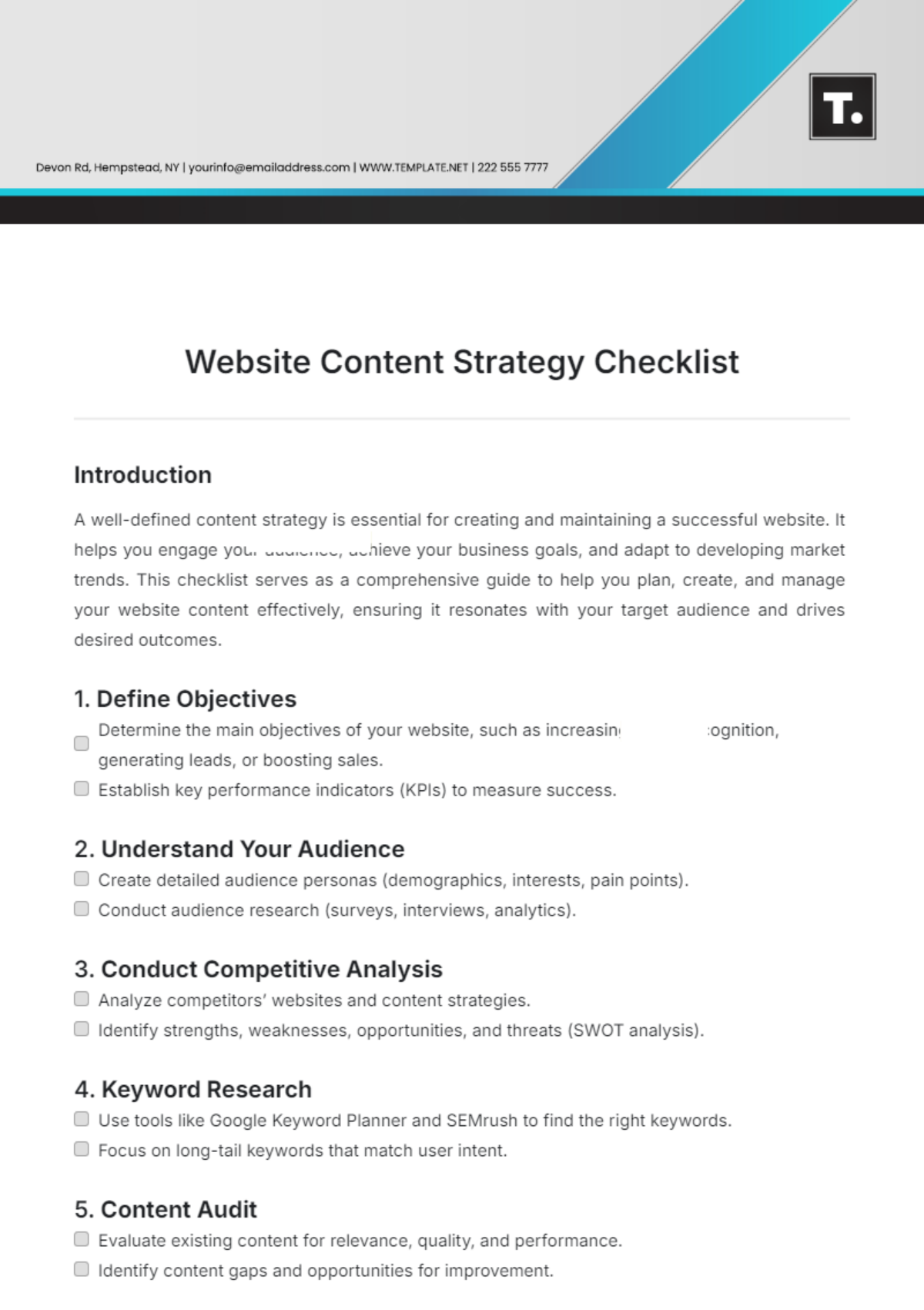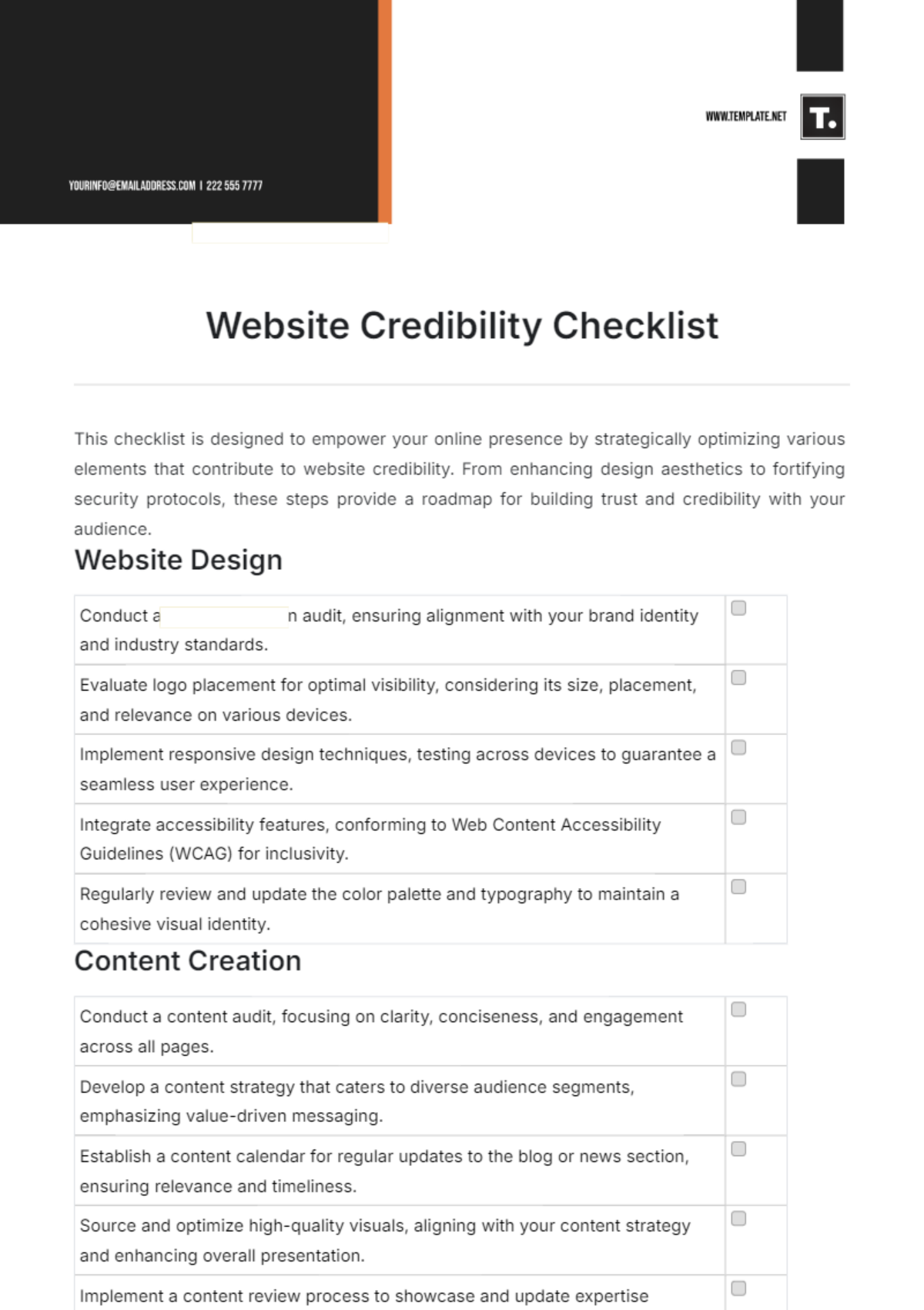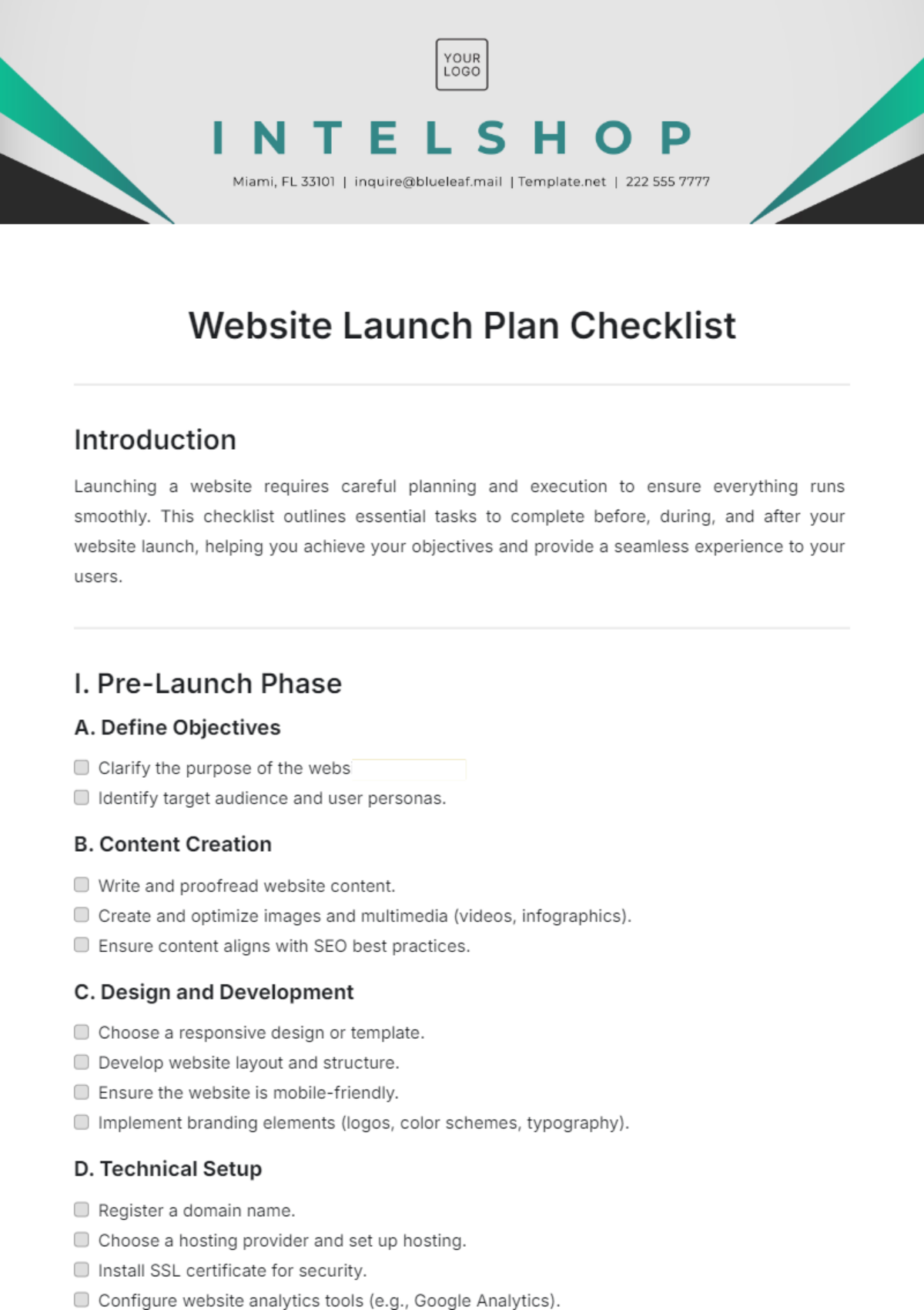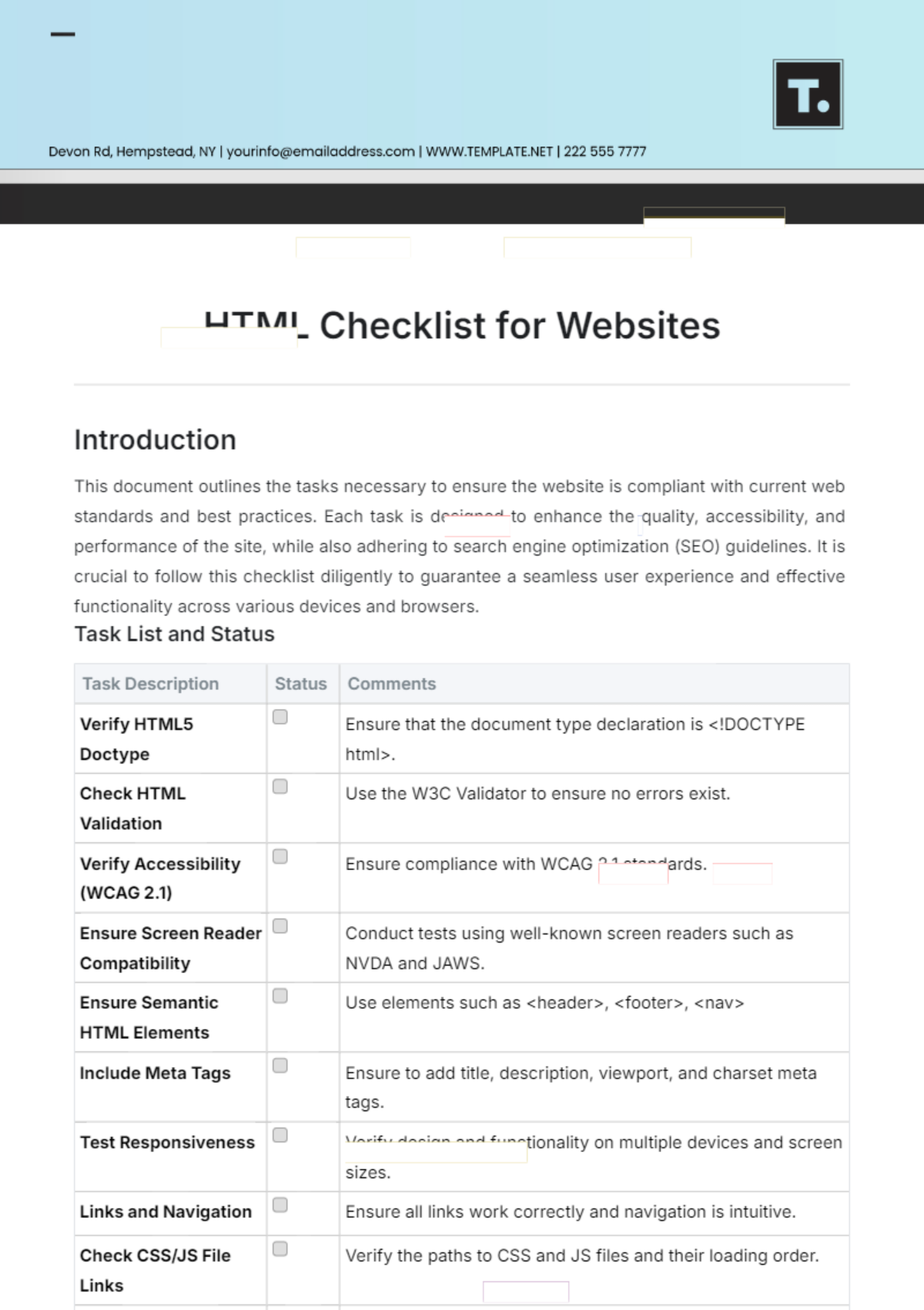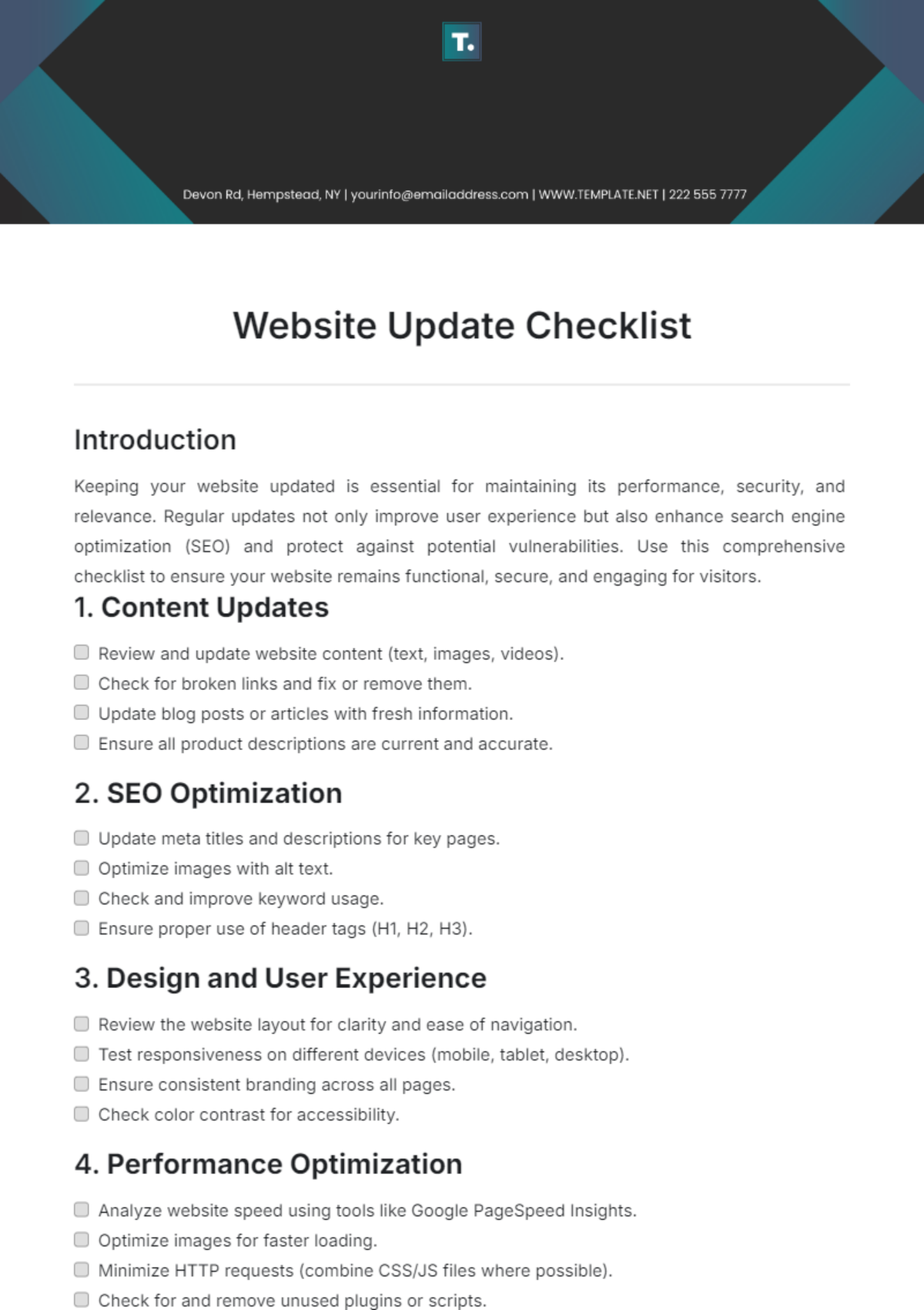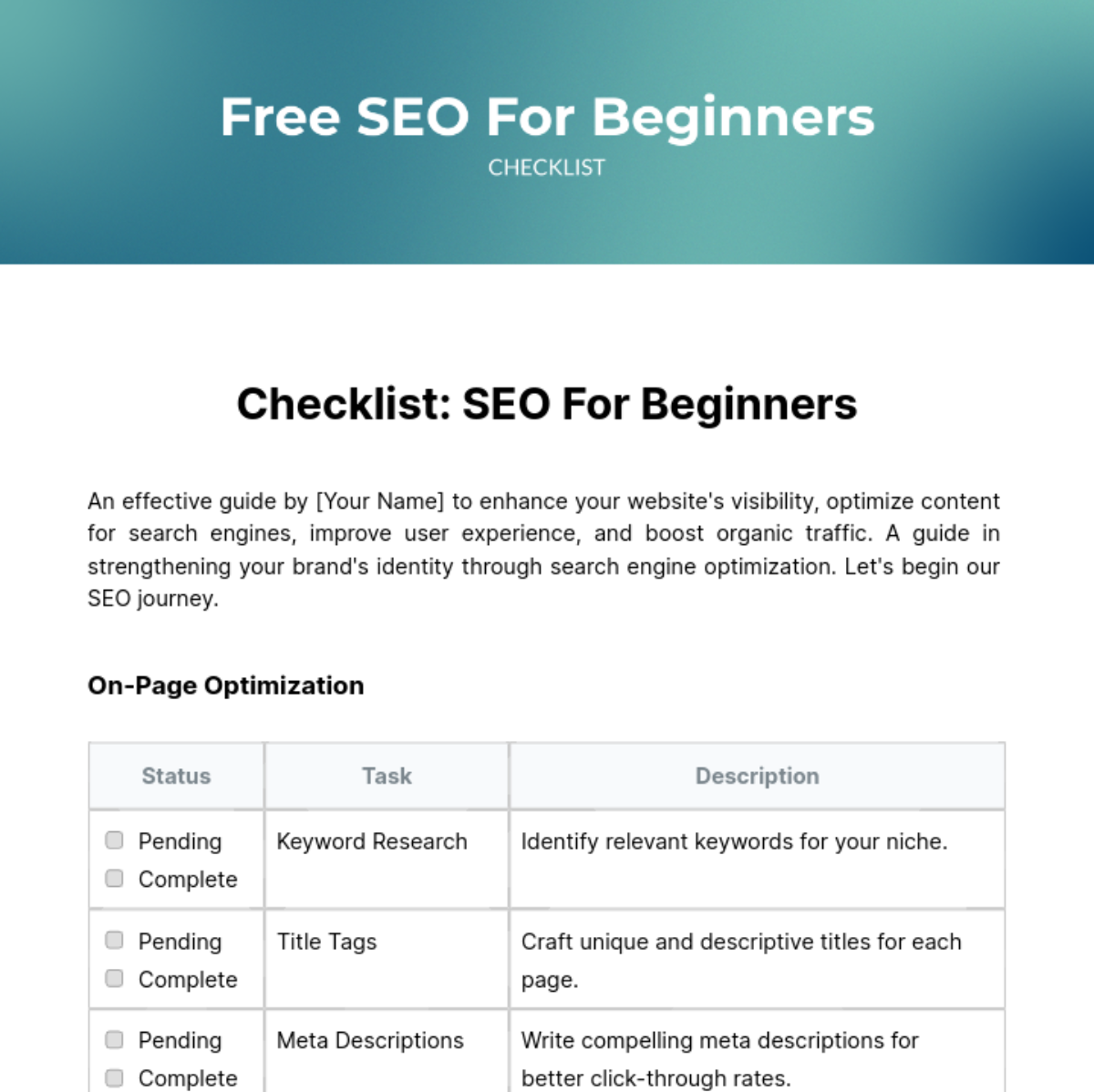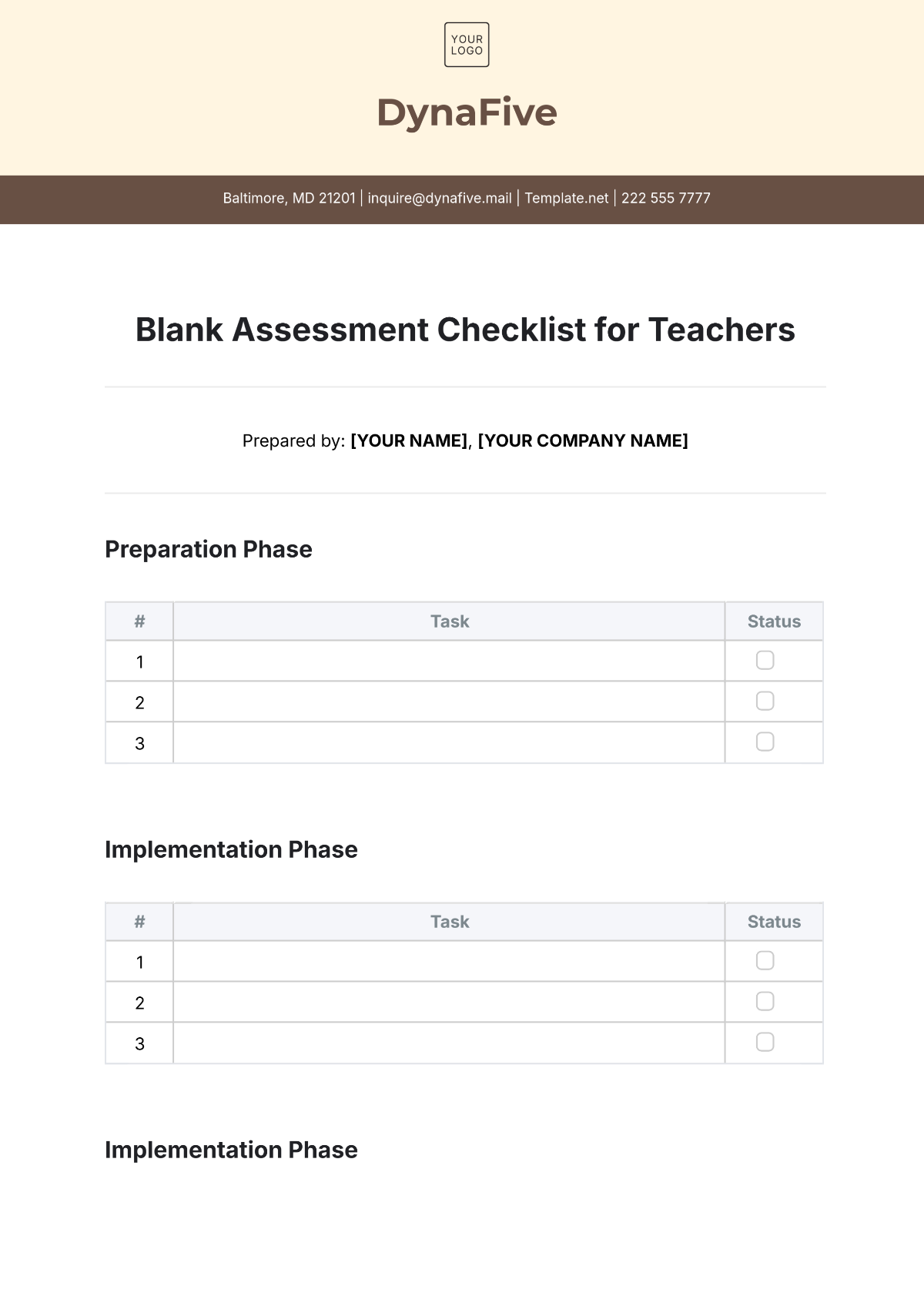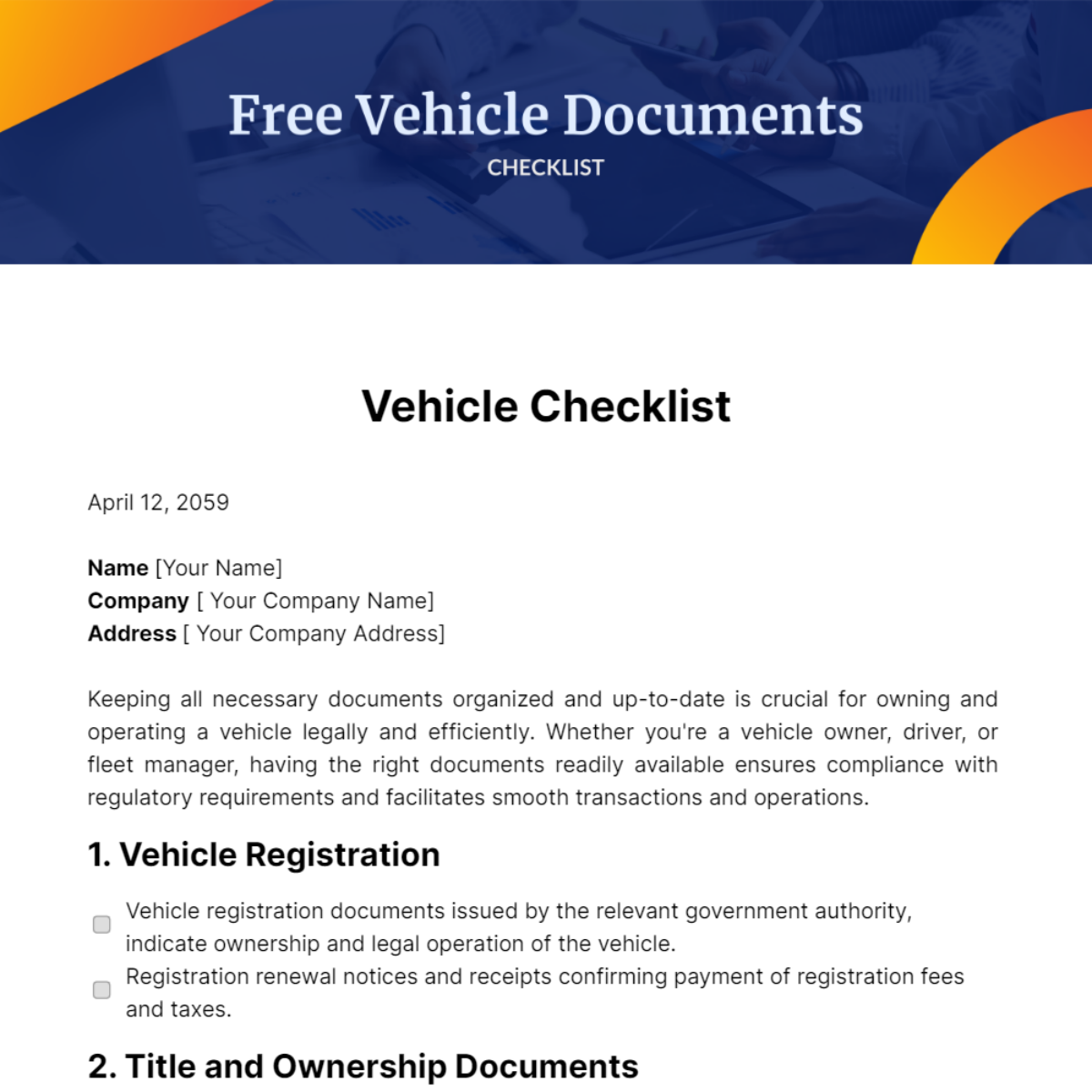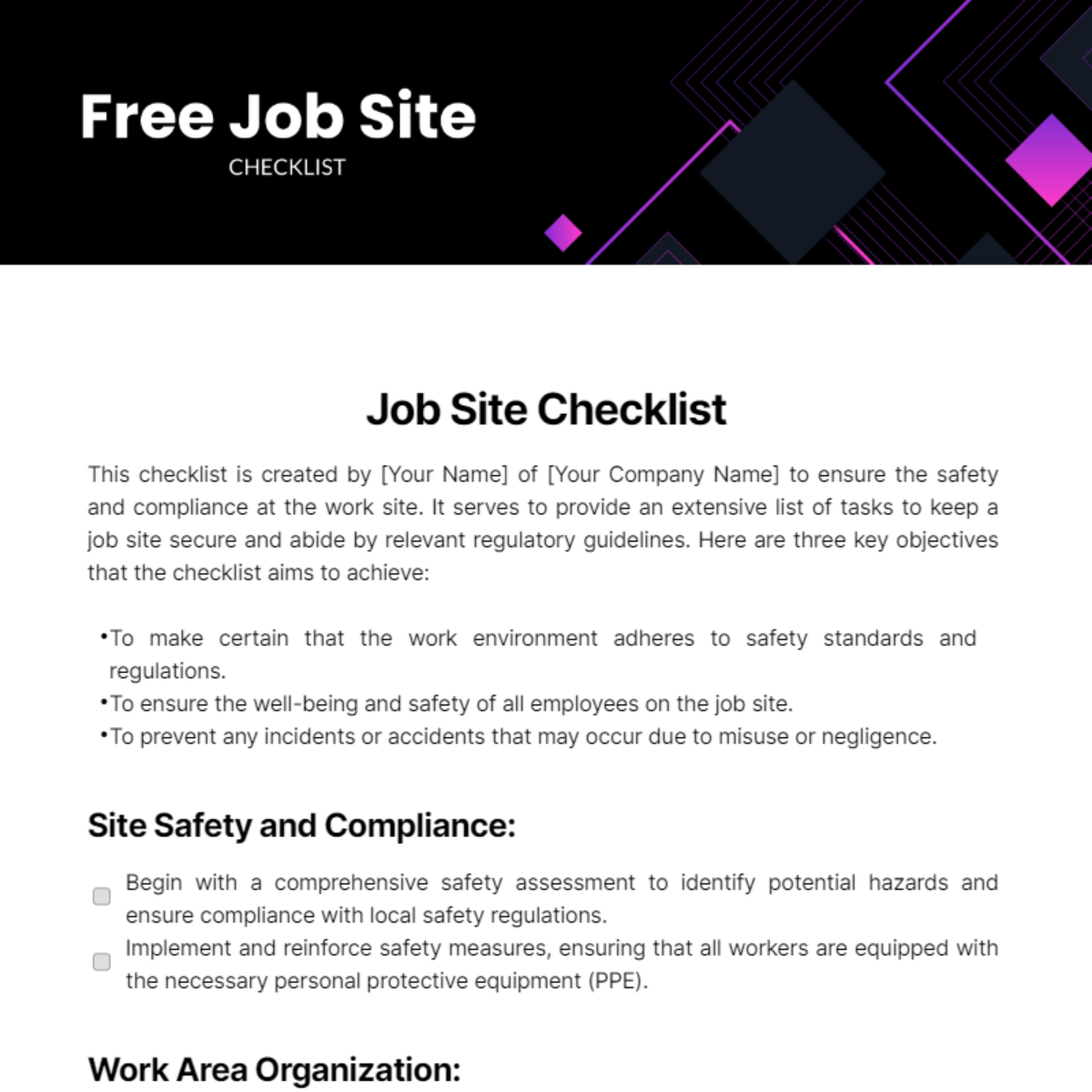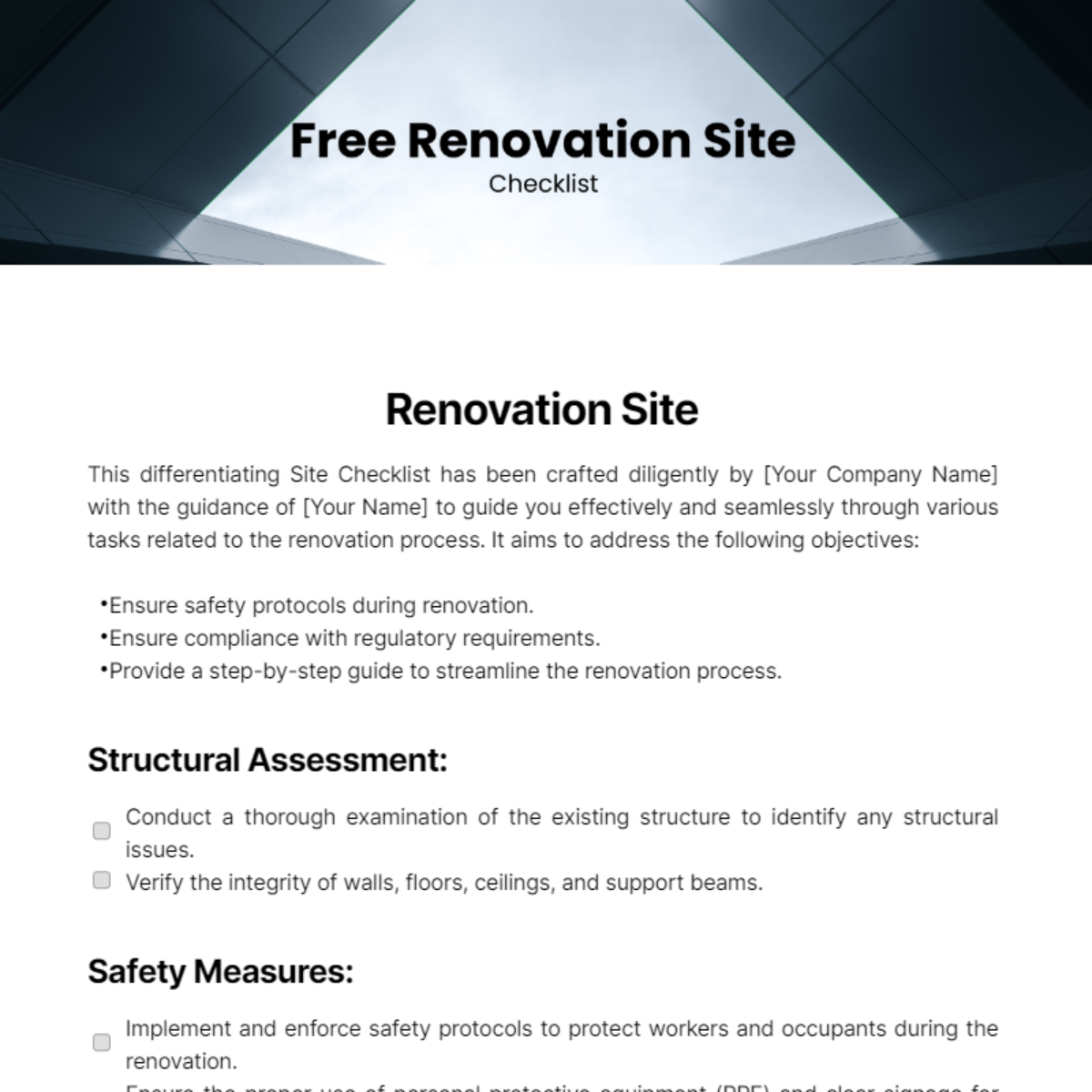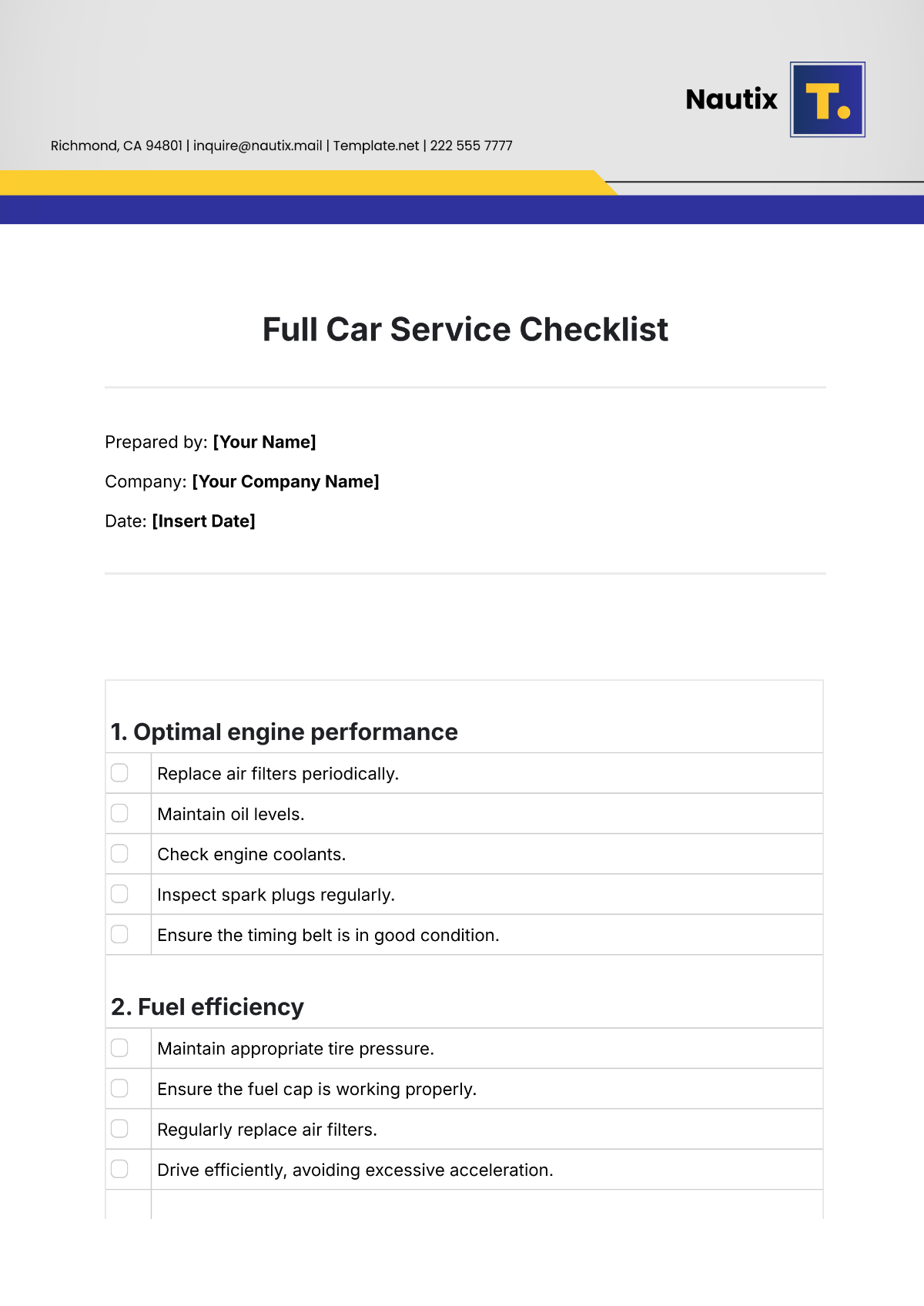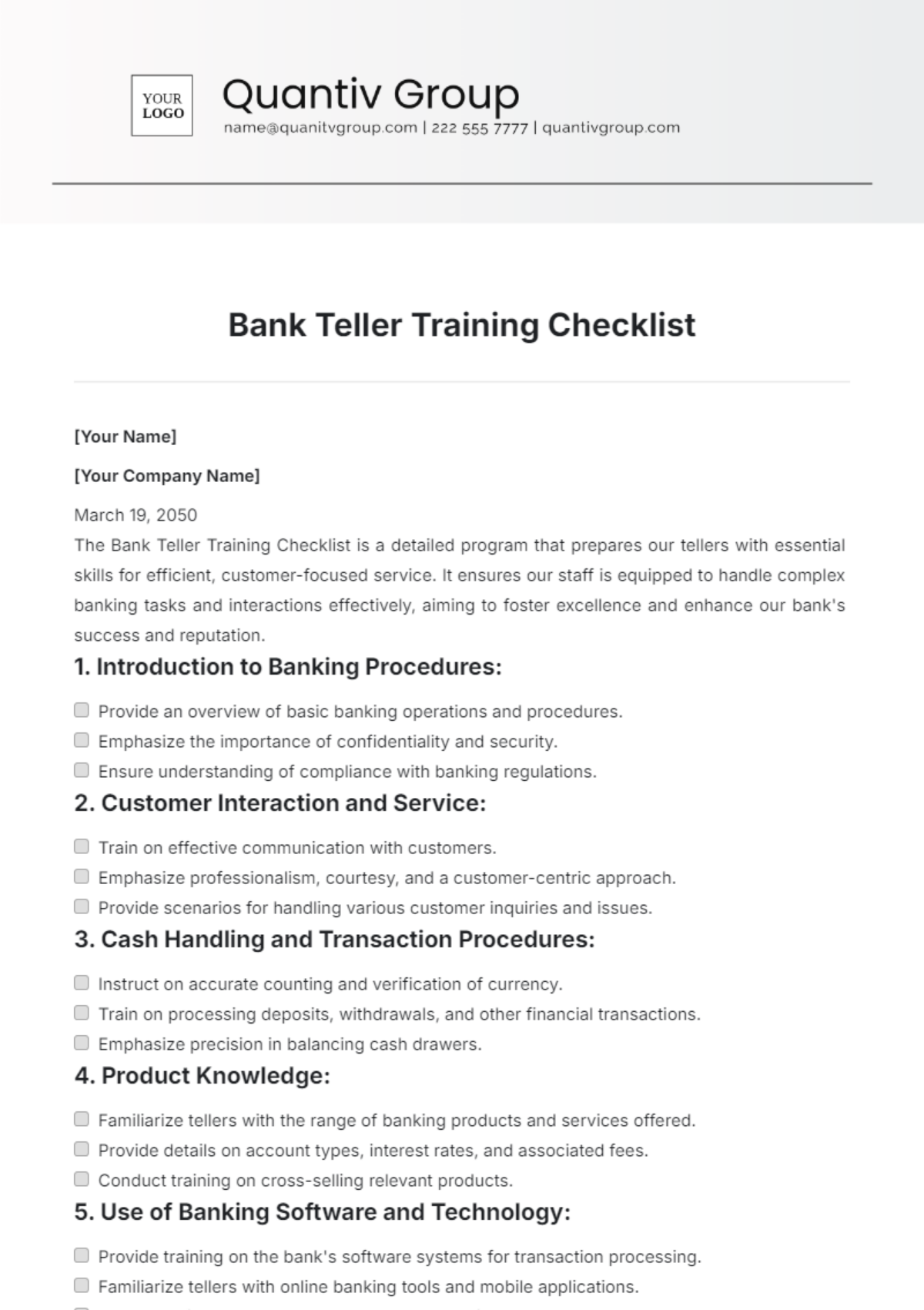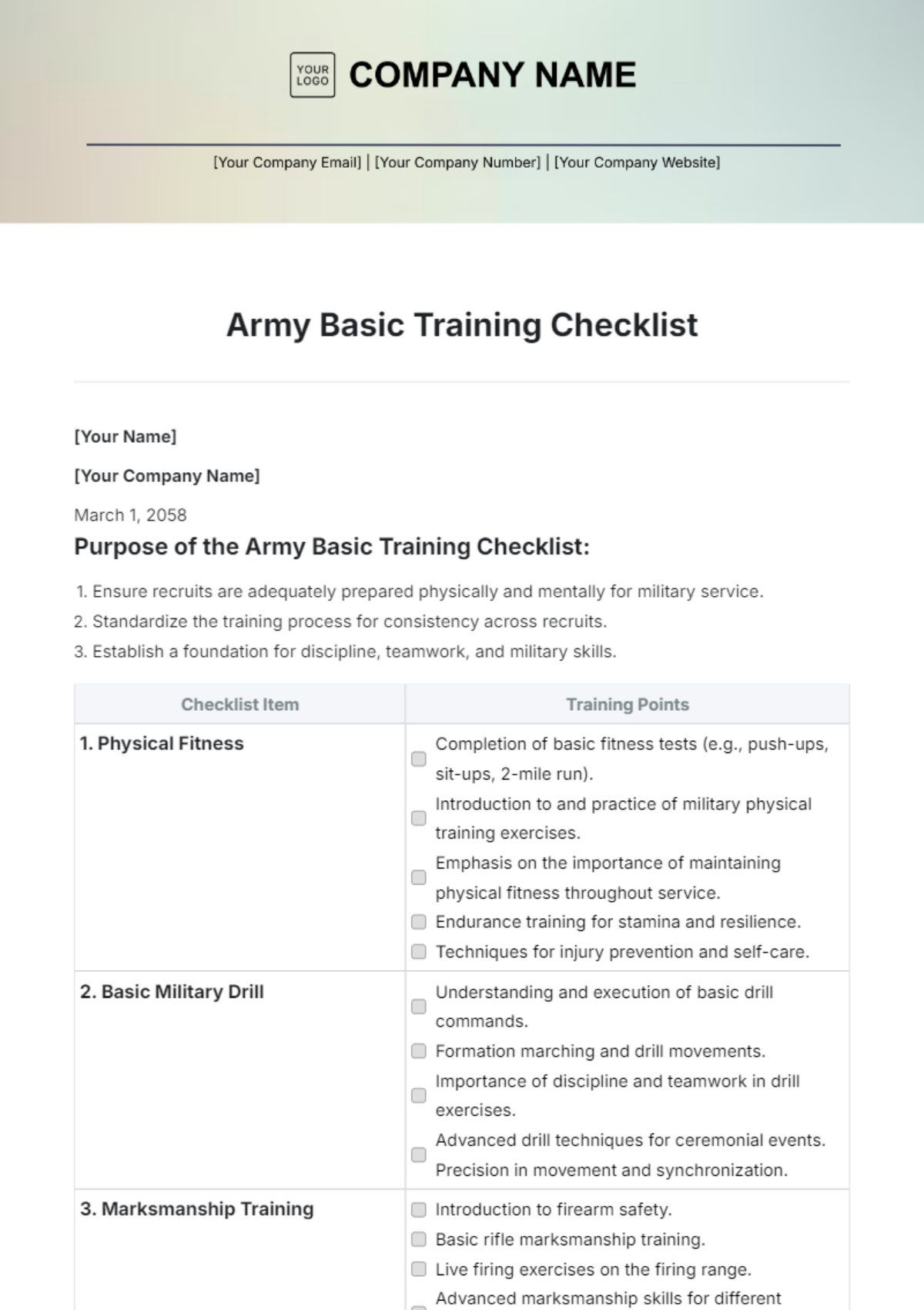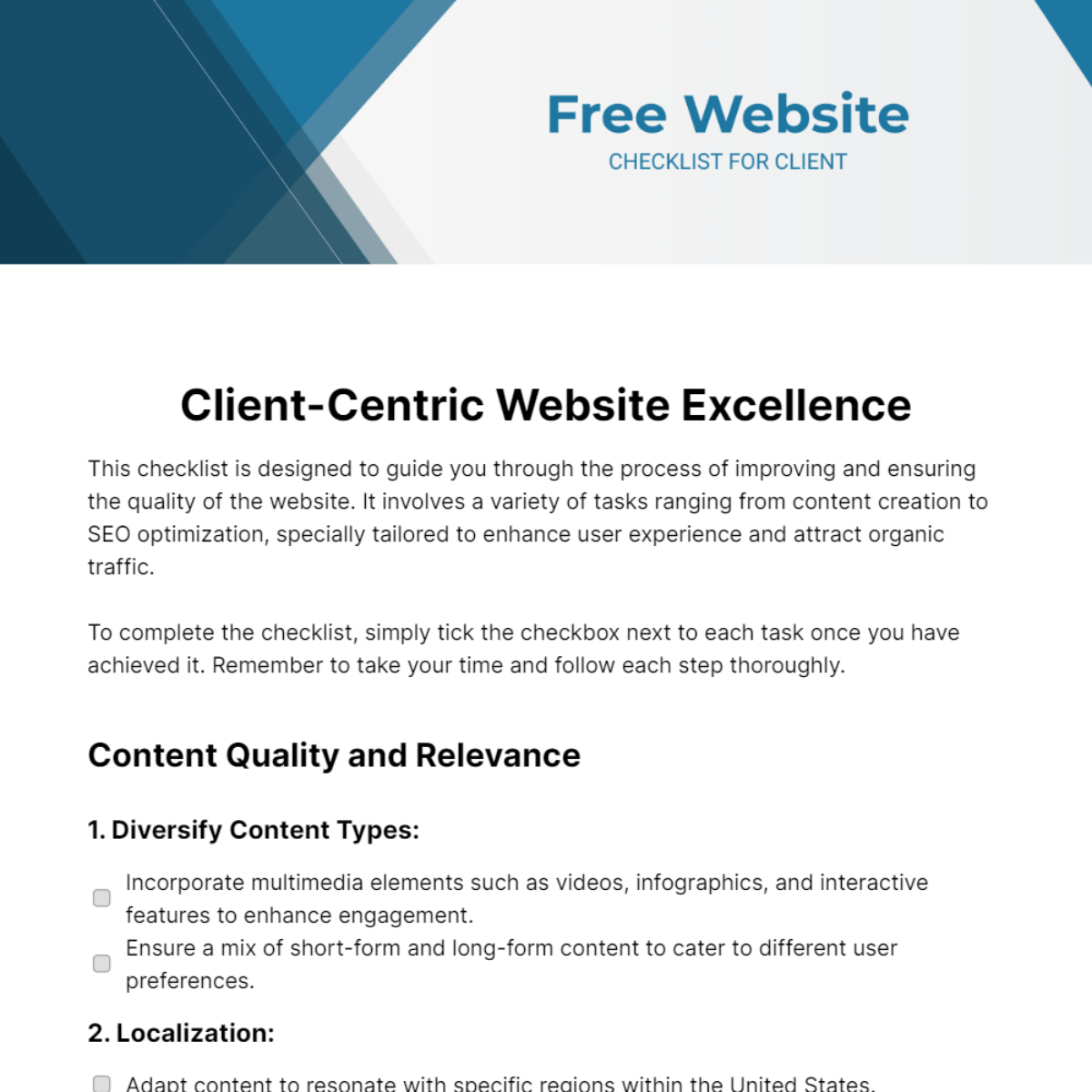Website Content Strategy Checklist
Introduction
A well-defined content strategy is essential for creating and maintaining a successful website. It helps you engage your audience, achieve your business goals, and adapt to developing market trends. This checklist serves as a comprehensive guide to help you plan, create, and manage your website content effectively, ensuring it resonates with your target audience and drives desired outcomes.
1. Define Objectives
Determine the main objectives of your website, such as increasing brand recognition, generating leads, or boosting sales.
Establish key performance indicators (KPIs) to measure success.
2. Understand Your Audience
Create detailed audience personas (demographics, interests, pain points).
Conduct audience research (surveys, interviews, analytics).
3. Conduct Competitive Analysis
Analyze competitors’ websites and content strategies.
Identify strengths, weaknesses, opportunities, and threats (SWOT analysis).
4. Keyword Research
Use tools like Google Keyword Planner and SEMrush to find the right keywords.
Focus on long-tail keywords that match user intent.
5. Content Audit
Evaluate existing content for relevance, quality, and performance.
Identify content gaps and opportunities for improvement.
6. Content Planning
Develop a content calendar (frequency, topics, formats).
Plan for seasonal or timely content based on trends.
7. Content Creation
Choose appropriate content formats (blogs, videos, infographics, podcasts).
Ensure content aligns with brand voice and style guidelines.
Include clear calls to action (CTAs).
8. SEO Optimization
Optimize content for target keywords (title tags, meta descriptions, headers).
Implement on-page SEO best practices (internal linking, alt tags).
Ensure mobile-friendliness and fast loading times.
9. Content Distribution
Determine distribution channels (social media, email newsletters, partnerships).
Plan promotional strategies to amplify reach (paid ads, influencer collaborations).
10. Engagement and Interaction
Encourage audience interaction (comments, shares, user-generated content).
Monitor engagement metrics (likes, shares, time on page).
11. Performance Tracking and Analytics
Set up tracking tools (Google Analytics, social media analytics).
Regularly review KPIs and adjust strategy based on performance data.
12. Continuous Improvement
Gather feedback from users and stakeholders.
Update and refresh content regularly based on performance and audience needs.
13. Compliance and Accessibility
Ensure compliance with legal requirements (GDPR, copyright).
Follow accessibility best practices (screen readers, alt text for images).
Final Notes
Regular Review: Schedule periodic reviews of your content strategy to adapt to changing market conditions and audience preferences.
Collaboration: Engage with your team for feedback and insights throughout the process.

